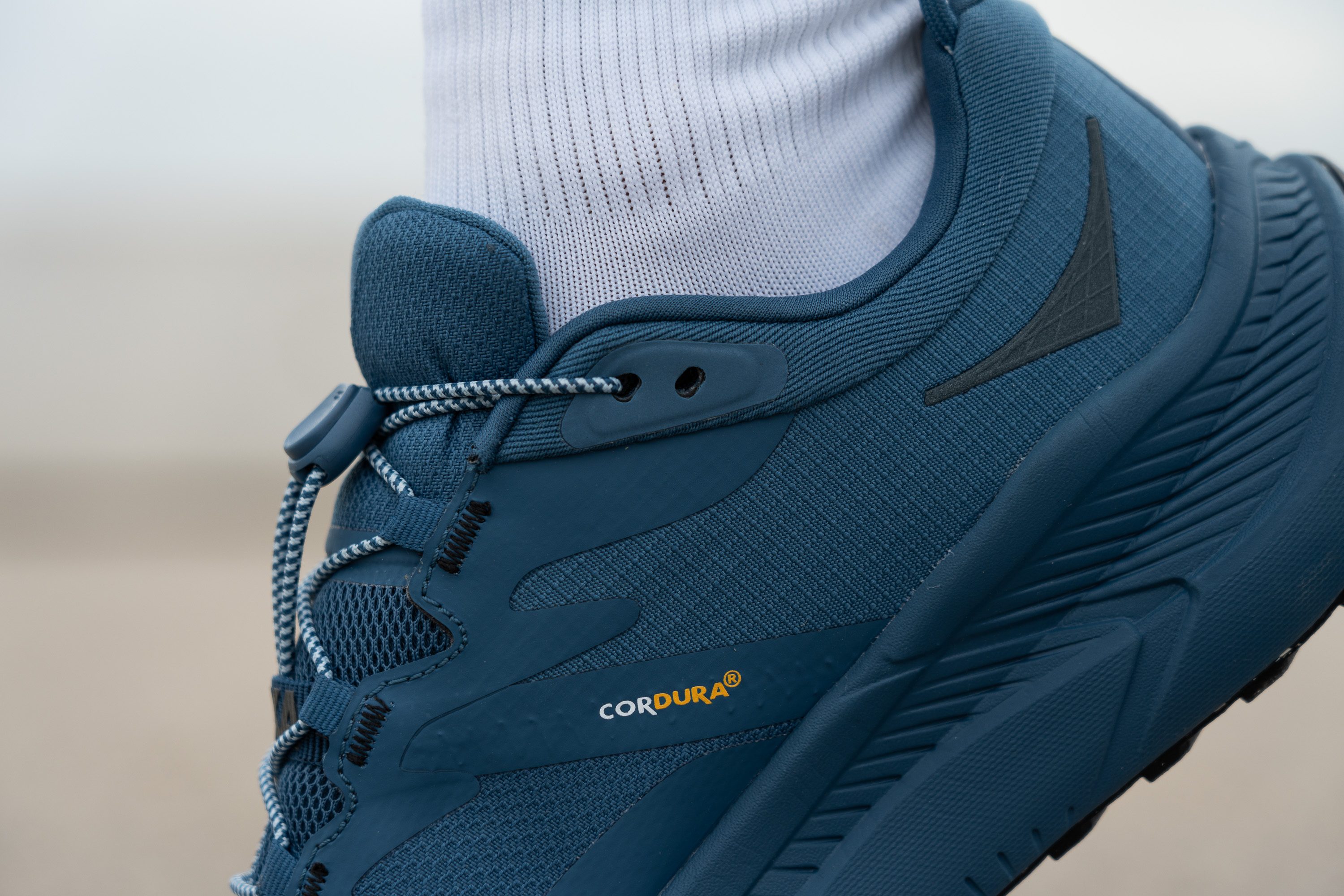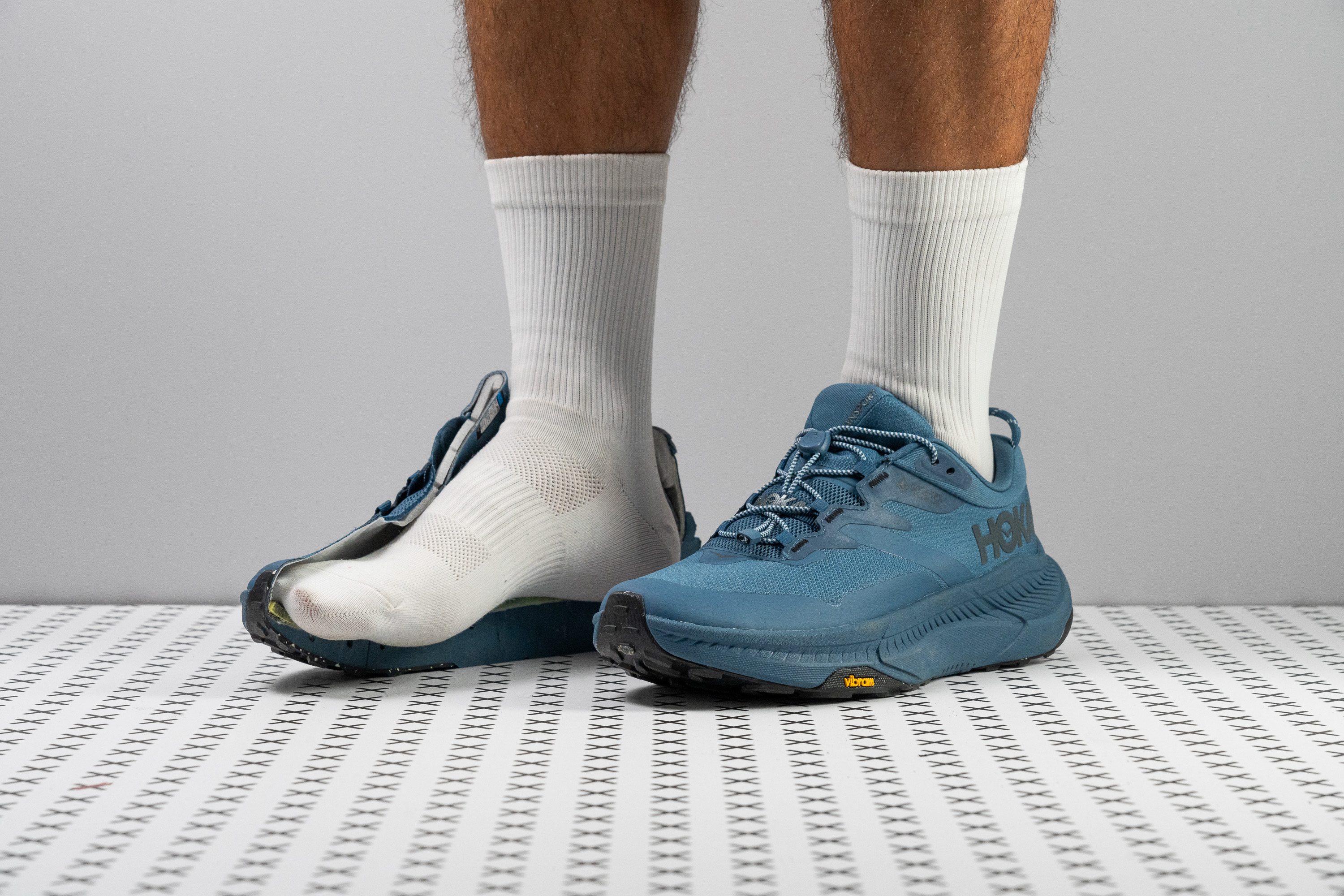Our verdict
- Top pick in best waterproof walking shoes
- Top pick in best winter walking shoes
Pros
- Top-class waterproofing
- Cushioned and supportive for all-day wear
- Smooth strides thanks to rockered shape
- Very stable platform
- Highly durable construction
- Excellent grip on dry and wet city streets
- Quick and easy lacing system (regular laces included in the box as well)
- Reflective elements all throughout the upper
- Sustainable materials in almost every shoe part
Cons
- A bit heavier than average
- Major stack and drop discrepancy with official specs
Audience verdict
- Top 23% most popular walking shoes
Comparison
The most similar walking shoes compared
+ + Add a shoe | |||||
|---|---|---|---|---|---|
| Audience score | 84 Good! | 90 Great! | 82 Decent! | 86 Good! | |
| Price | $175 | $160 | $140 | $170 | |
| Arch support | Neutral | Neutral | Neutral | Neutral | |
| Shock absorption | Moderate | High | Moderate | Moderate | |
| Energy return | Moderate | High | Moderate | High | |
| Traction | High | High | - | - | |
| Condition | Plantar fasciitis | - | - | - | |
| Orthotic friendly | ✓ | ✓ | ✓ | ✓ | |
| Weight lab Weight brand | 11.6 oz / 330g 11.9 oz / 337g | 9.4 oz / 266g | 10.9 oz / 309g 10.9 oz / 309g | 10.2 oz / 288g 10.2 oz / 288g | |
| Lightweight | ✗ | ✓ | ✗ | ✓ | |
| Breathability | Warm | Warm | Warm | Warm | |
| Use | For standing all dayCity | For standing all dayTravelCityDisneyEuropeFor nurses | For standing all dayCityDisneyEurope | For standing all dayCityDisneyEurope | |
| Size | Slightly small | True to size | True to size | Slightly small | |
| Midsole softness | Balanced | Balanced | Balanced | Firm | |
| Difference in midsole softness in cold | Small | Normal | Big | Normal | |
| Insole thickness | Average | Very thin | Average | Average | |
| Removable insole | ✓ | ✓ | ✓ | ✓ | |
| Stiffness | Stiff | Moderate | Stiff | Stiff | |
| Torsional rigidity | Stiff | Stiff | Stiff | Moderate | |
| Heel counter stiffness | Moderate | Flexible | Moderate | Stiff | |
| Heel tab | Finger loop | None | Finger loop | Finger loop | |
| Drop lab | 9.7 mm | 8.7 mm | 8.0 mm | 6.5 mm | |
| Heel stack lab | 34.8 mm | 35.5 mm | 34.1 mm | 28.9 mm | |
| Forefoot | 25.1 mm | 26.8 mm | 26.1 mm | 22.4 mm | |
| Width / fit | Medium | Medium | Narrow | Narrow | |
| Toebox width | Medium | Medium | Narrow | Narrow | |
| Closure | Bungee laces | Bungee laces | Bungee laces | LacesSlip-on | |
| Waterproof | ✓ | ✗ | ✗ | ✓ | |
| Toebox durability | Good | Good | Good | - | |
| Heel padding durability | Good | Bad | - | - | |
| Outsole durability | Decent | Good | - | - | |
| Midsole width - forefoot | Average | Wide | Average | Narrow | |
| Midsole width - heel | Average | Wide | Average | Narrow | |
| Outsole hardness | Average | Average | Average | Average | |
| Outsole thickness | Average | Average | Average | Average | |
| Tongue padding | Average | Average | Average | Average | |
| Tongue: gusset type | Both sides (semi) | Both sides (semi) | None | Both sides (full) | |
| Material | - | Mesh | - | - | |
| Ranking | #30 Bottom 16% | #16 Top 45% | #34 Bottom 5% | #28 Bottom 22% | |
| Popularity | #8 Top 23% | #5 Top 14% | #6 Top 17% | #9 Top 25% |
Who should buy
In our opinion, the Hoka Transport GTX is a must to consider if you are in search of the following:
- a warm and waterproof shoe for getting around the city in cold and wet weather
- a durable and wear-resistant shoe that lasts well over one season
- a well-cushioned and stable platform to keep you going all day
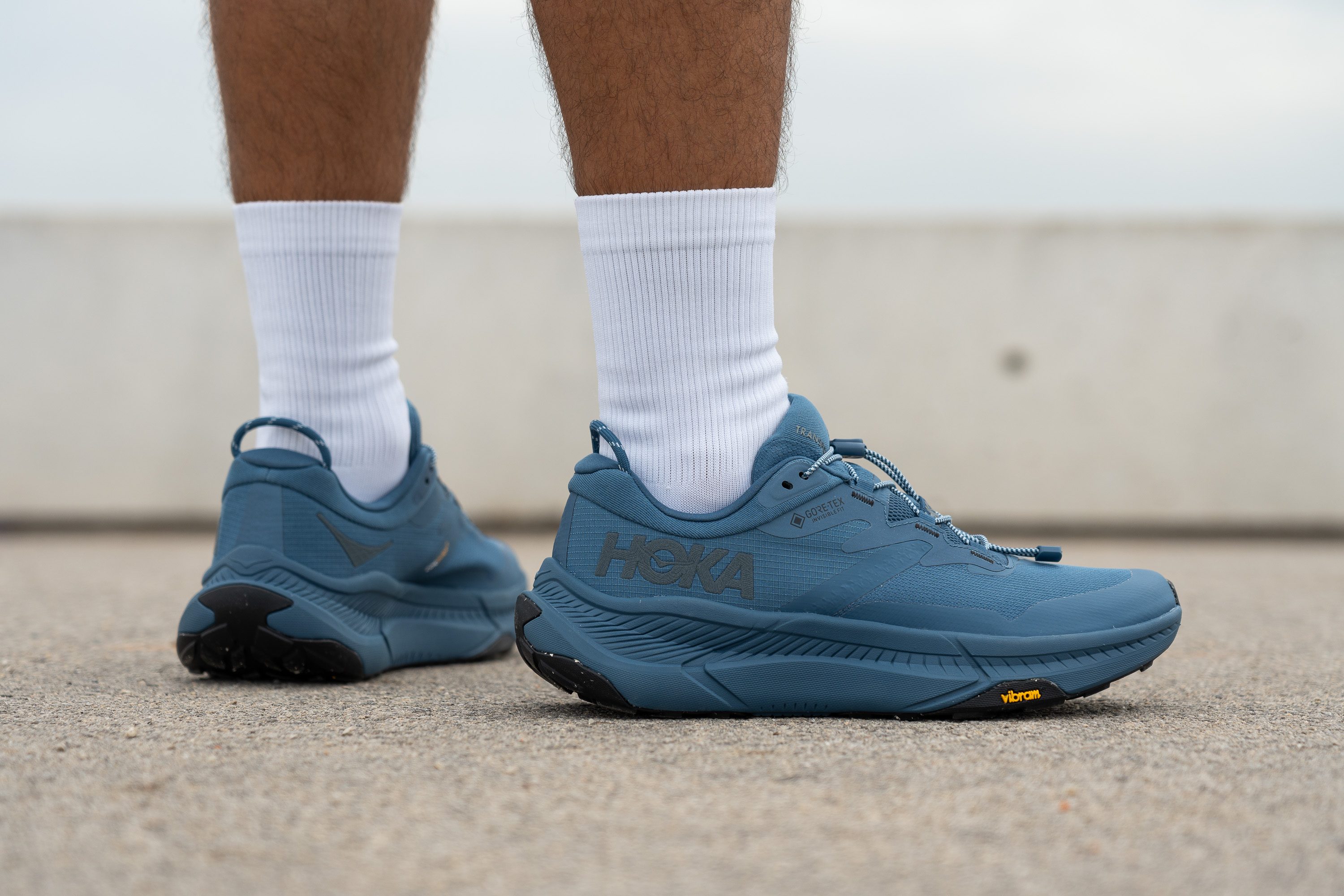
Who should NOT buy
The shoe's waterproof membrane limits its use to low temperatures and wet conditions. Otherwise, it's just not worth paying the extra $25 for Gore-Tex to toast your feet when you get an all-season base model - the Hoka Transport.
And if you wish there was a lighter, cushier, and cozier waterproof shoe from Hoka, the Cifton 9 GTX is right up your alley! And it's $15 cheaper.
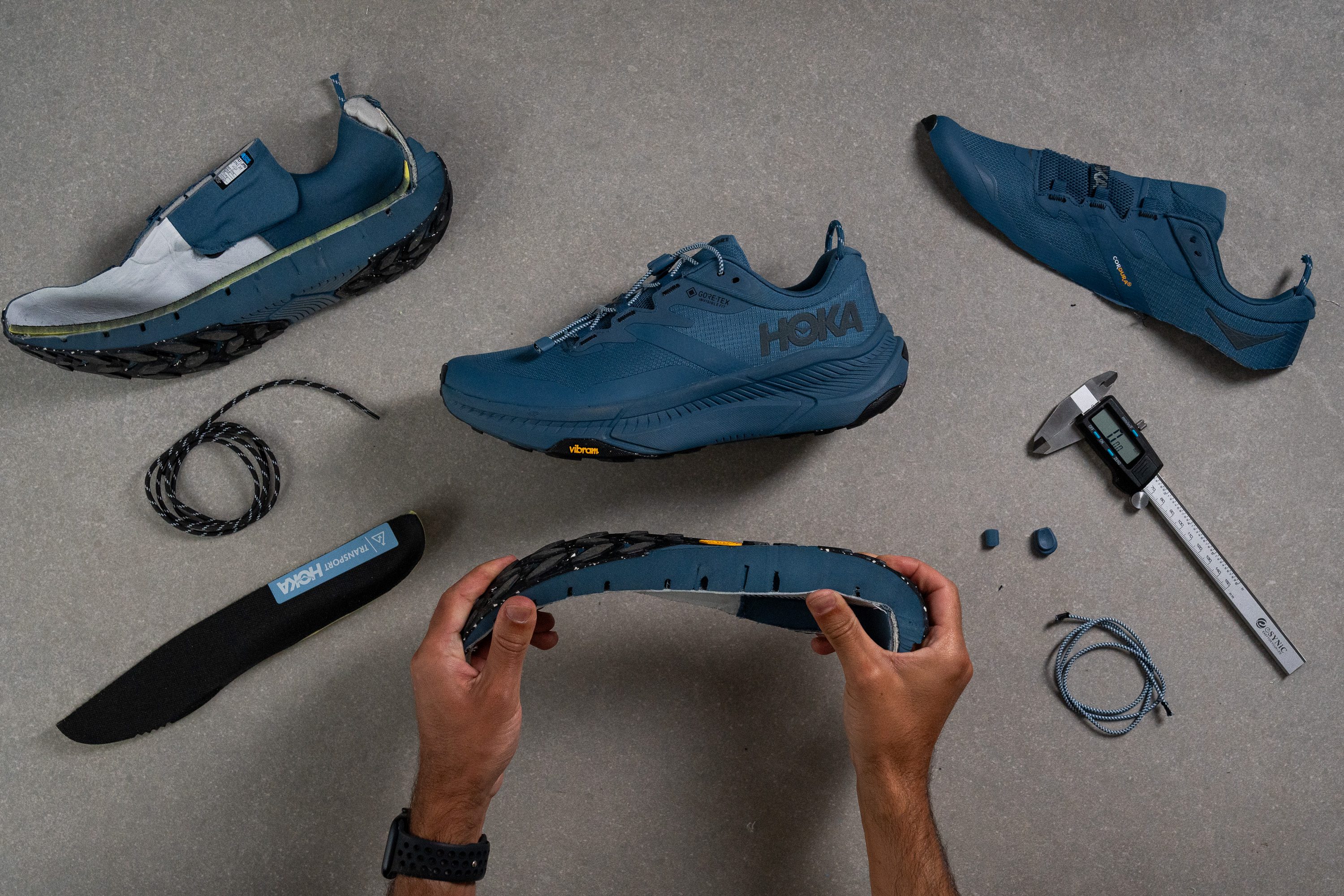
Cushioning
Shock absorption
Recording the Hoka Transport GTX's shock absorption at a moderate 105 SA, we were surprised to find that it's not as abundantly cushioned as most other walking shoes from Hoka.
This is not to say that it lacks impact protection (we found it amazingly comfortable and supportive for long hours of walking), but the Transport GTX does have its limits when it comes to all-day wear. It's just not as pampering for the feet and legs as we've come to expect from Hoka shoes.
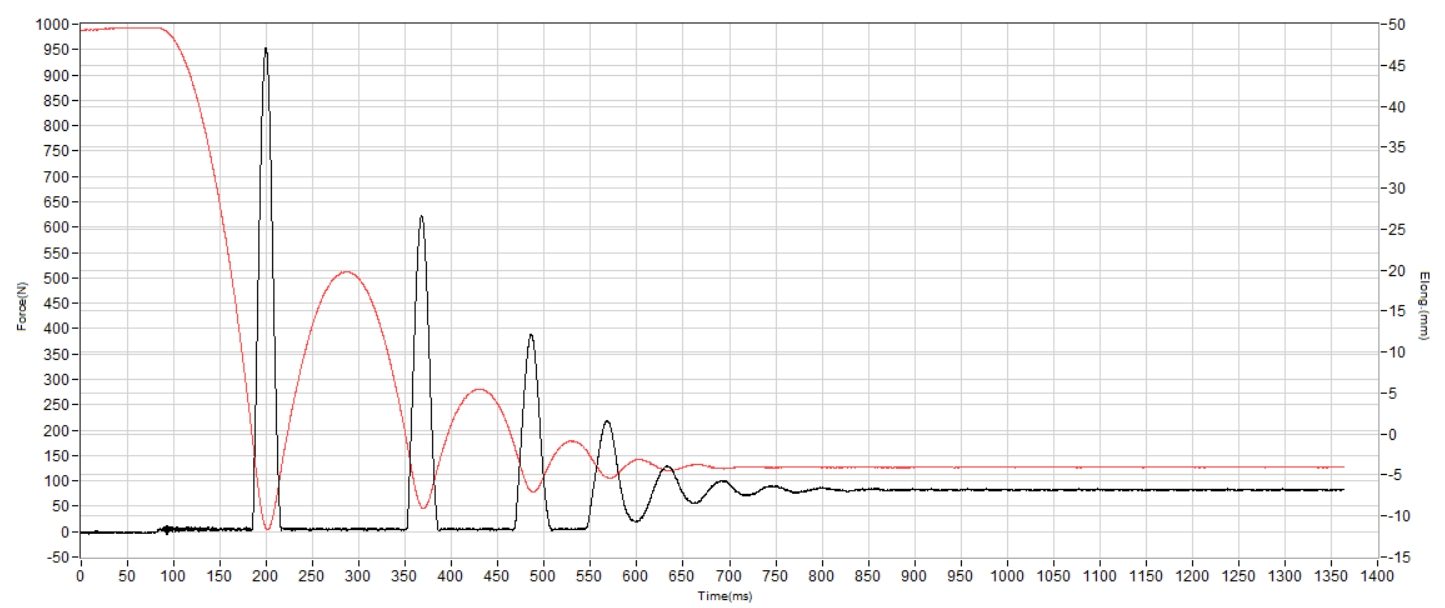
| Transport GTX | 105 SA |
| Average | 111 SA |
Energy return
There is not much rebound to this Hoka shoe.
With a moderate energy return of 47.1%, it ride feels fairly flat and static. However, you do get the benefit of a more stable base in return.
| Transport GTX | 47.1% |
| Average | 51.1% |
Heel stack
On paper, the Hoka Transport GTX is supposed to be a heavily cushioned model with 37 mm of stack height in the heel and 32 mm in the forefoot (for ladies, it should be 36 mm and 28 mm, respectively).
But when we first tried this Hoka shoe, its cushioning did not feel as bottomless as we expected. That's why we cut shoes in half and use a caliper to double-check the official specs.

And just as we suspected, the tool showed a lower heel stack reading of 34.8 mm. But it's only 2.2 mm less than stated, why doesn it feel like the difference is bugger? Let's have a look at the forefoot stack...
| Transport GTX | 34.8 mm |
| Average | 32.3 mm |
Forefoot stack
We measured the shoe's forefoot stack at only 25.1 mm! This is 6.9 mm less than promised! Wow... It is even lower than stated in the women's version (28 mm).
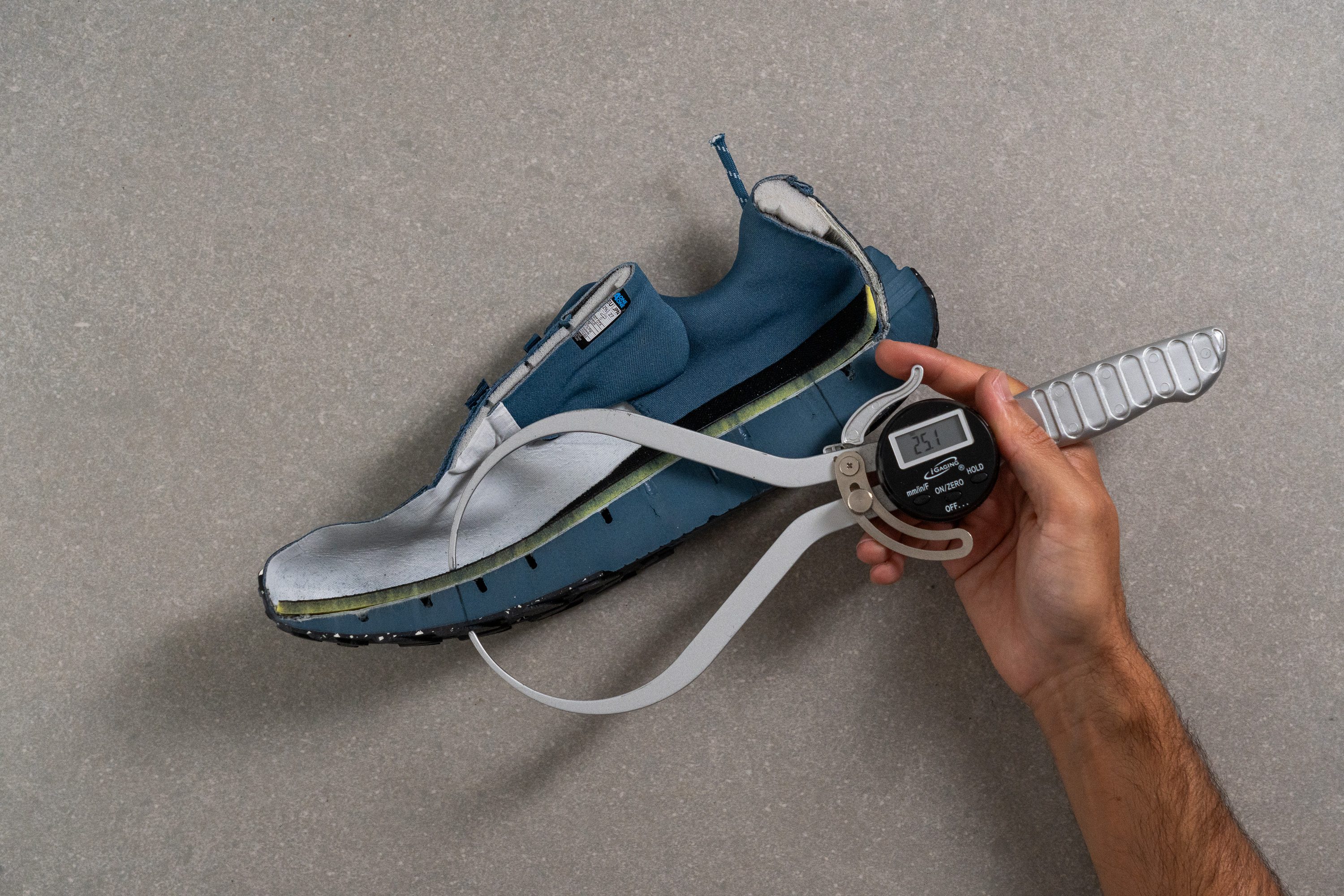
Perhaps the brand has a different approach to measuring stack height but we always follow the same protocol following the World Athletics regulations.
| Transport GTX | 25.1 mm |
| Average | 21.9 mm |
Drop
Considering the shoe's lower-than-expected forefoot stack, its heel-to-toe drop is sure to be lower as well.
Instead of the official 5 mm offset for men (and 8 mm for women), our caliper measurements returned 9.7 mm - almost 50% taller than stated.
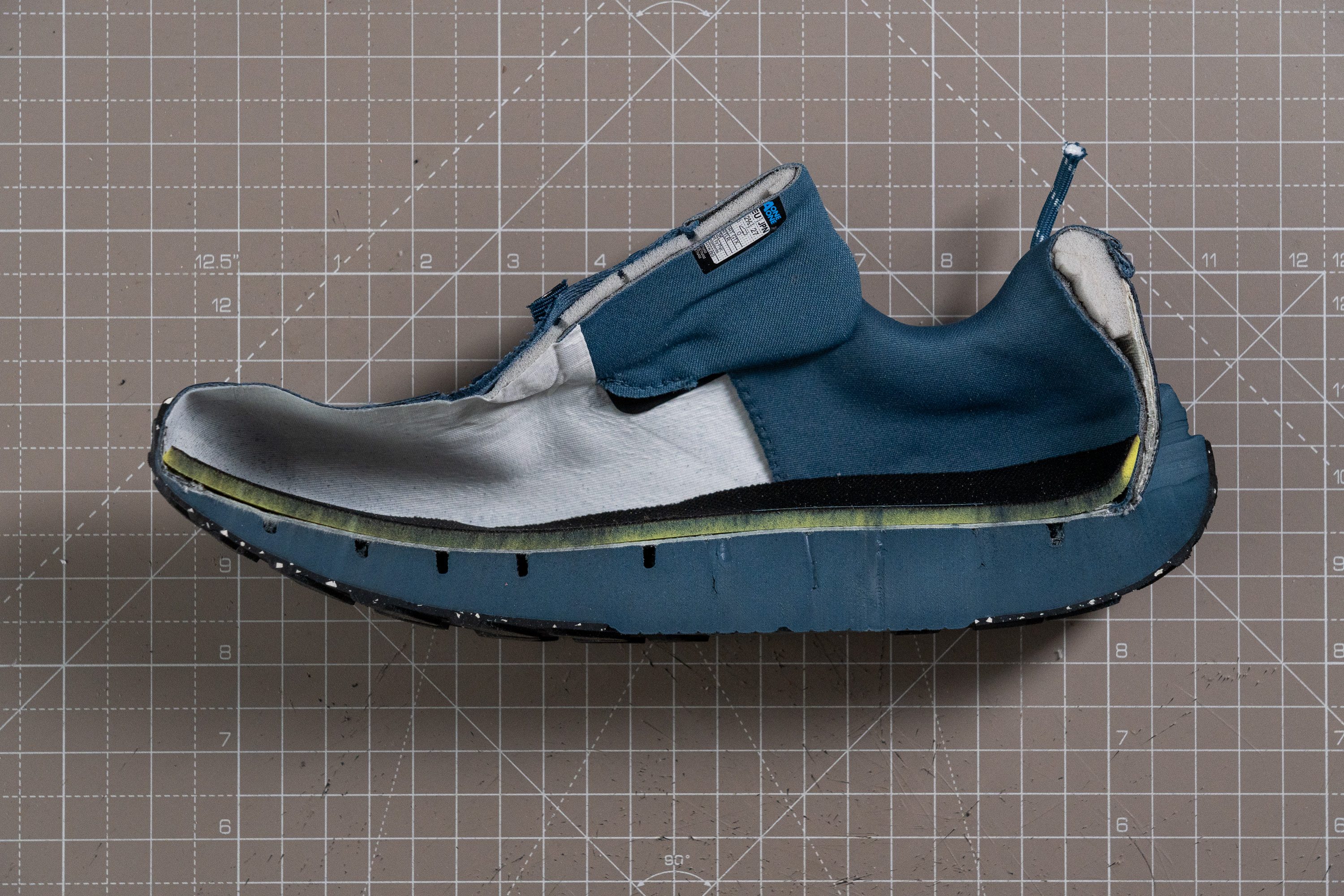
Even though most people don't notice the drop in their walking shoes, those who are used to lower-drop shoes might feel the difference.
| Transport GTX | 9.7 mm |
| Average | 10.4 mm |
Midsole softness
With heel stack and drop discrepancies out of the way, let's talk about how comfortable the shoe's midsole actually feels!
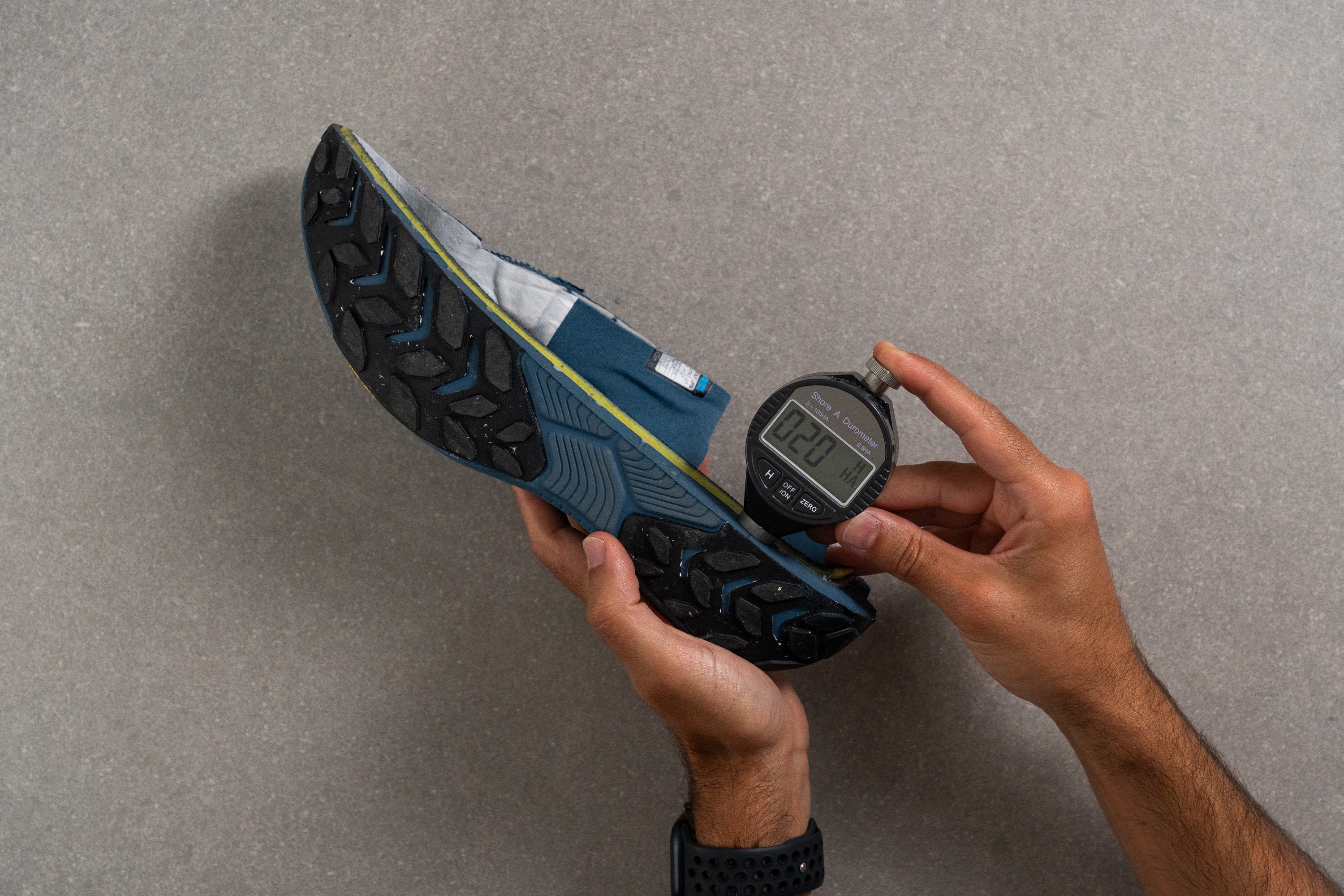
Its cushioning foam has a moderately soft nature with a good amount of give. Pressing a Shore A durometer against it returned 20.6 HA which is indeed slightly softer than the average (by approximately 20%).
Our wear tests also confirmed that the Hoka Transport GTX is excellent for spending long hours on hard urban surfaces like asphalt, concrete, and even cobblestone.
| Transport GTX | 20.6 HA |
| Average | 26.4 HA |
Size and fit
Size
HOKA Transport GTX fits slightly small (126 votes).
Width / Fit
Even though the Hoka Transport GTX comes with an added layer of waterproofing, our gel mold shows that it doesn't compromise the fit!
Once the mold had hardened, we grabbed a caliper to measure its widest area (under the big toe and the pinky). With a reading of 95.4 mm, we found that the Transport GTX is right on par with the average!
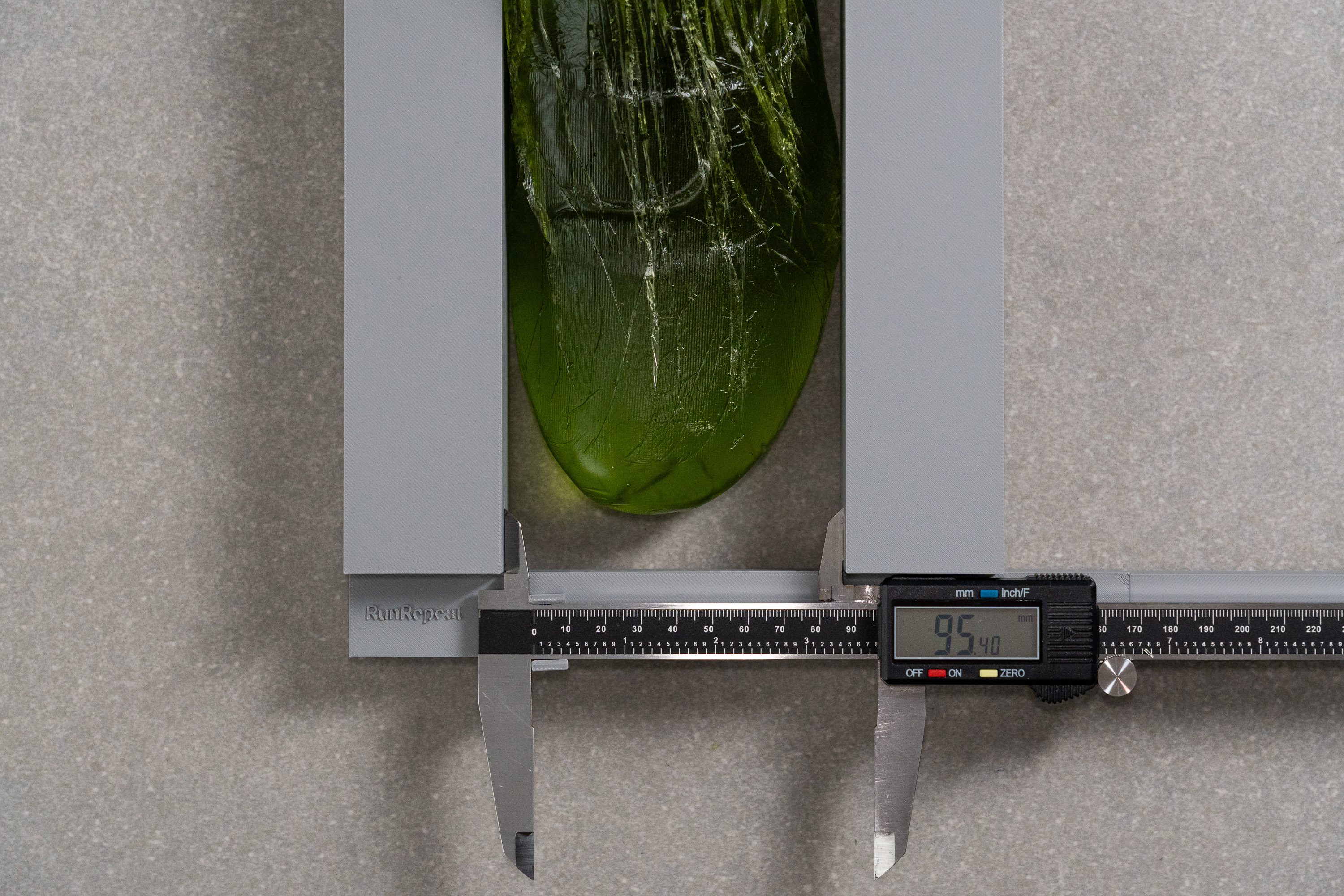
| Transport GTX | 95.4 mm |
| Average | 94.4 mm |
Toebox width
And it doesn't even taper so much towards the toes. Repeating the caliper measurement where the big toe normally sits, we got 72.6 mm, which is just around the average.
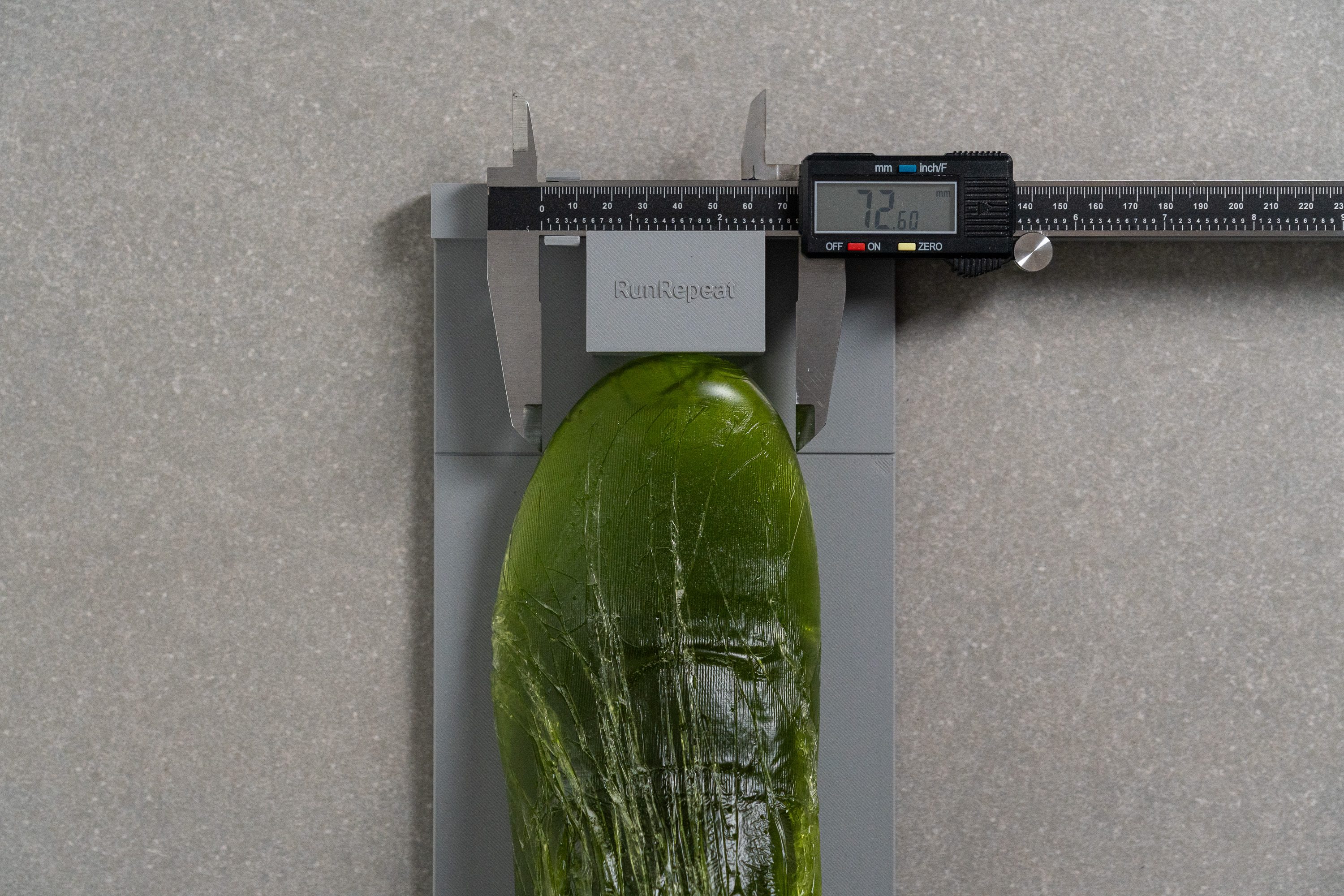
| Transport GTX | 72.6 mm |
| Average | 71.2 mm |
Toebox height
The shoe's toebox height showed a standard reading of 26.0 mm and the rubberized mudguard didn't feel constricting on top of our toes either.
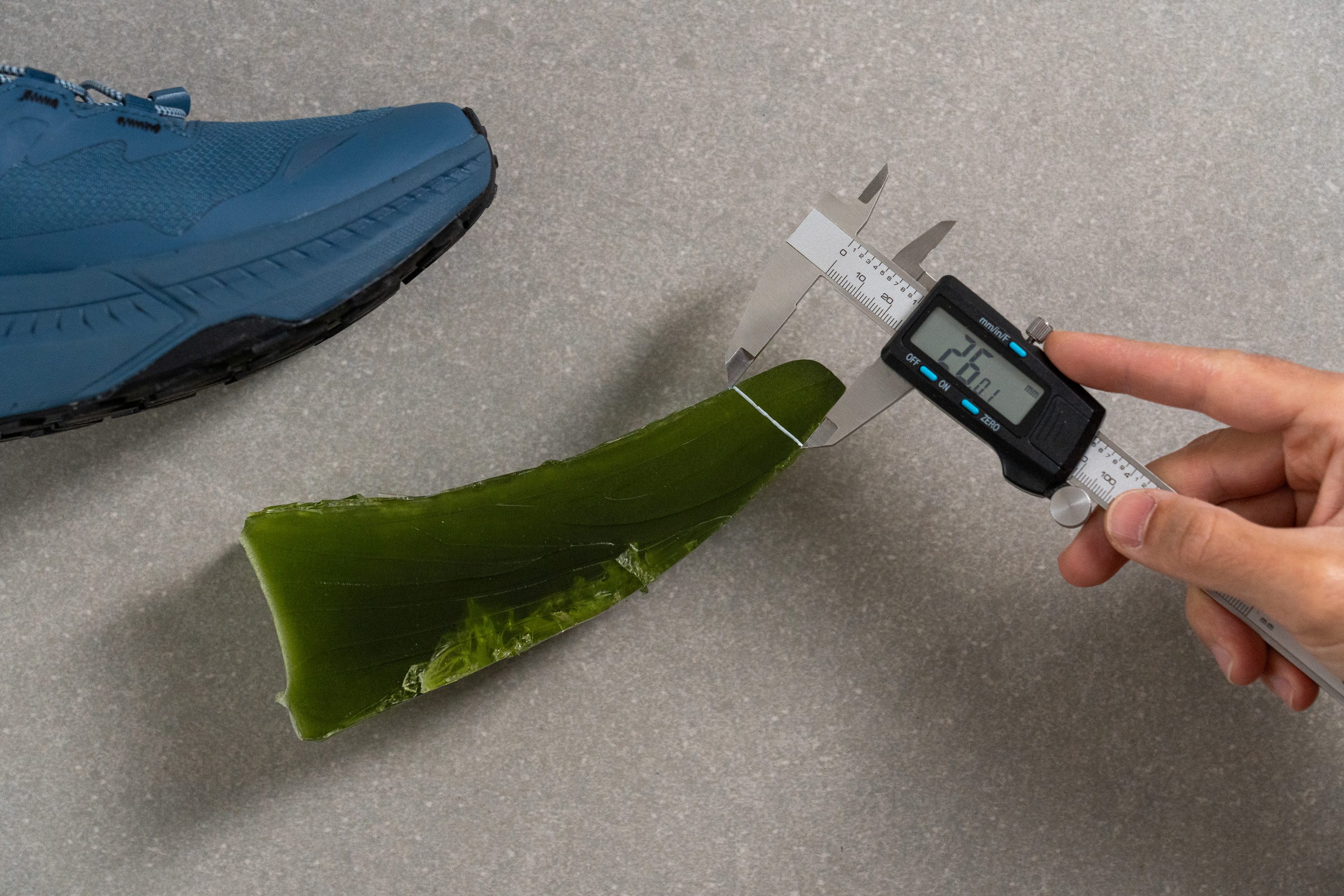
| Transport GTX | 26.0 mm |
| Average | 26.4 mm |
Laces
The Quick-toggle lace is the Hoka Transport GTX's default lacing system. In simple words, it is a bungee cord with an adjustable toggle.
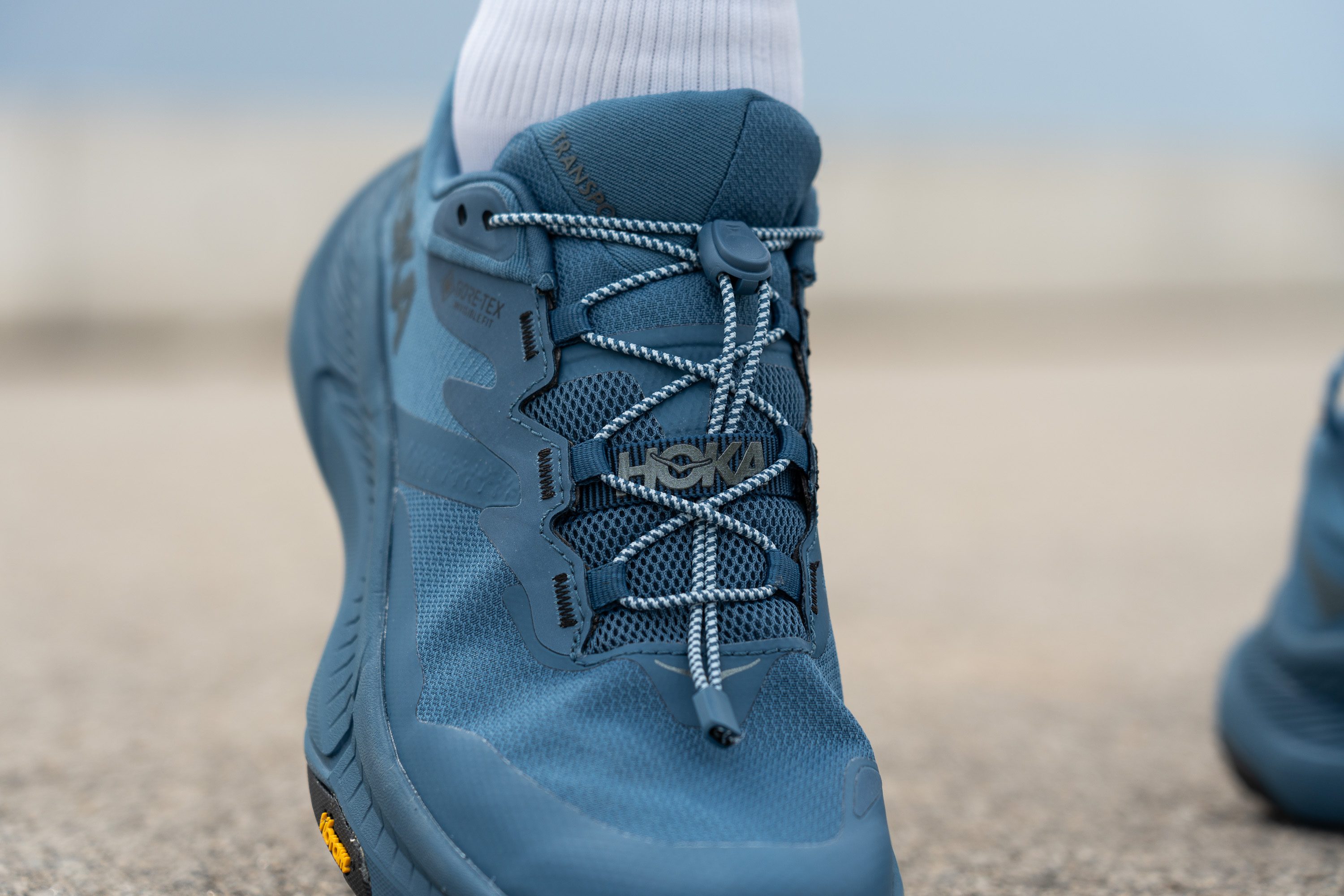
This setup is very quick and easy to customize and you have the option to tuck the excess lace under the elastic garage on the tongue.
And if you're not a fan of the Quick-toggle, you can swap it for a pair of normal laces that come in the box.
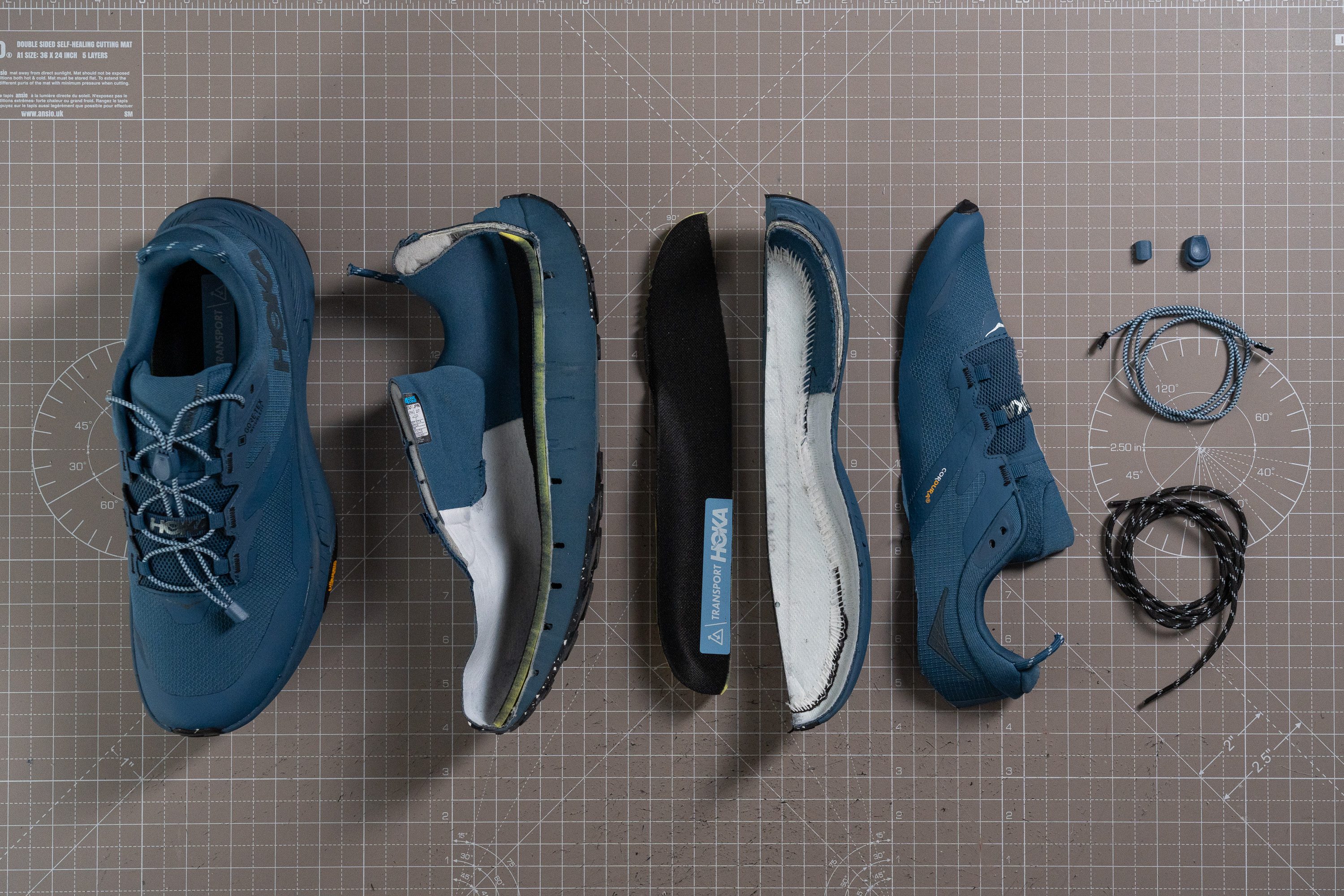
Traction / Grip
Traction test
The Hoka Transport GTX was designed to face a great deal of puddles, slush, and city dirt while helping you get from point A to point B without any slips and falls.
And because most slips occur during the heel strike, we tested the shoe's heel friction while stomping it against wet concrete at a 7-degree angle. The Transport GTX performed admirably returning some of the highest friction scores - 0.56.
This Hoka will keep you surefooted in the concrete jungle even if it's slick and you are running late.
| Transport GTX | 0.56 |
| Average | 0.46 |
Outsole design
The Transport GTX comes with moderately deep multi-directional lugs to provide a stronger bite on urban slush, mud, dirt, and even on some light outdoor trails.
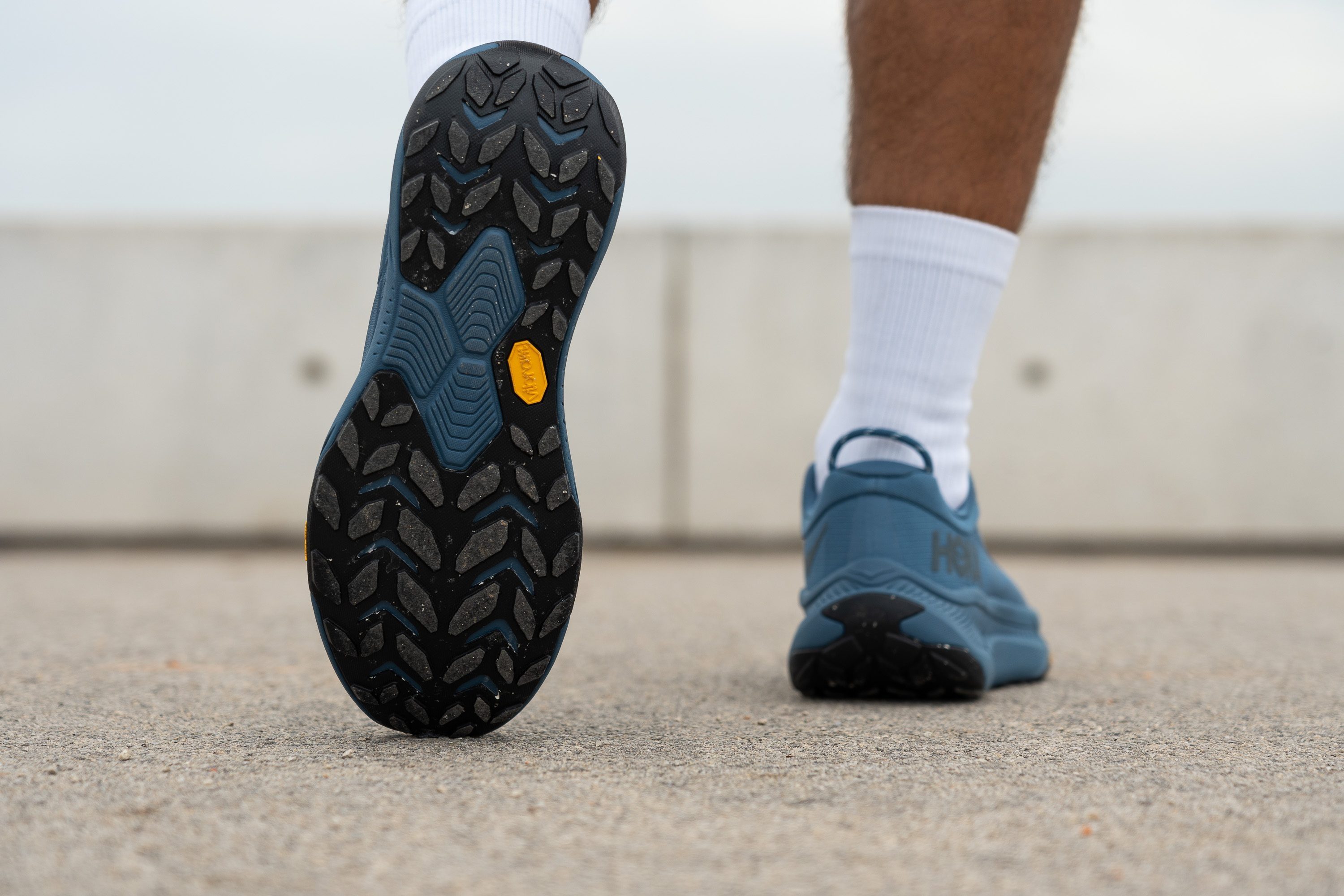
Flexibility / Stiffness
As we already mentioned, the Hoka Transport GTX feels a bit stiffer than a typical walking shoe and it continues to show in our lab test results.
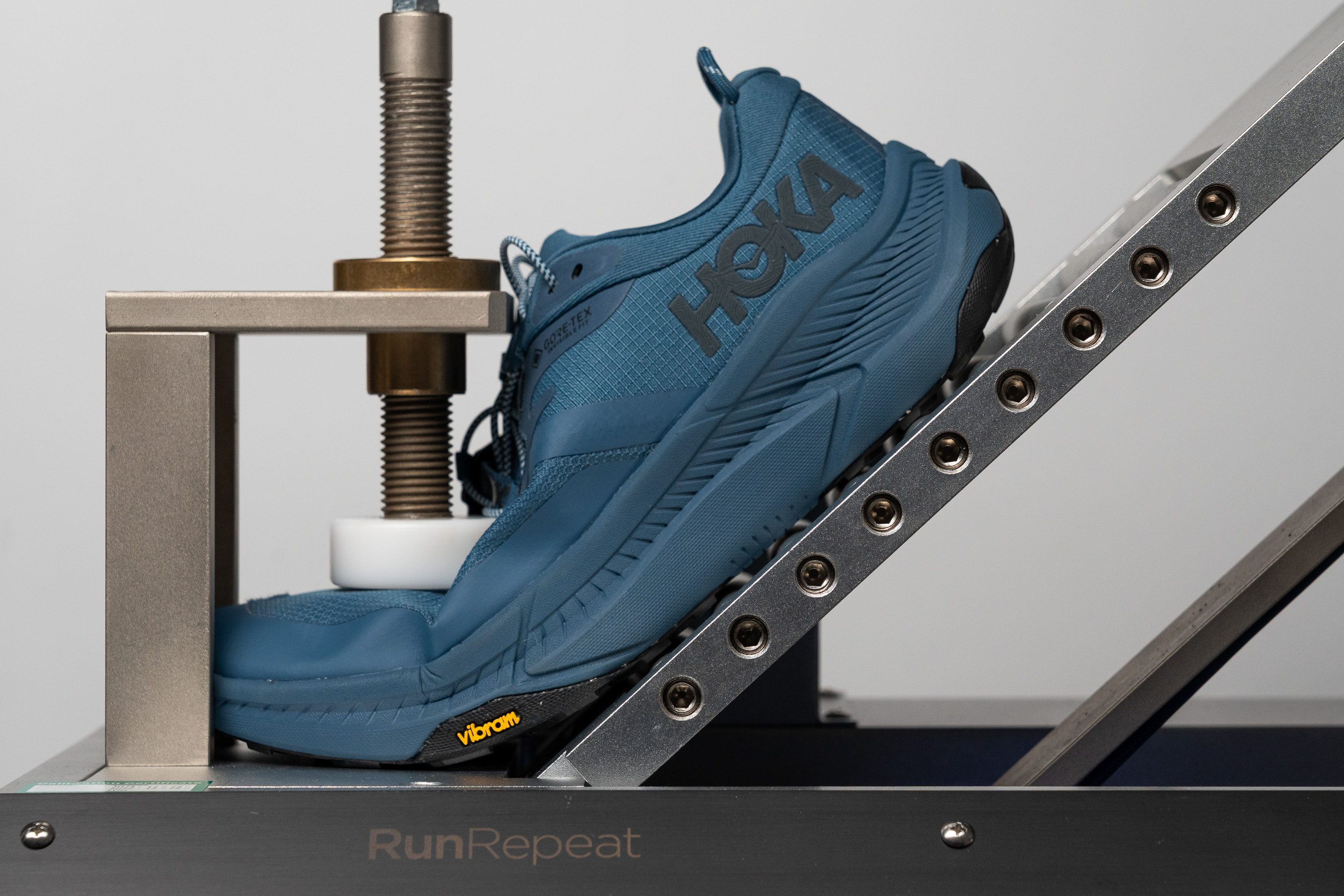
In our longitudinal stiffness test, it took 19.8N to bend the shoe to a 30-degree angle according to our flexibility testing machine. That's about 40% more than it takes on average. We believe that the stiffness comes from both the tough Cordura upper and the structured sole.
But what is it that helps this Hoka shoe feel smoother on the walk? Its slightly rockered midsole shape.
This shoe geometry has taken over the running shoe industry and is now spreading among walking shoes like wildfire (think Nike Motiva and KEEN WK400). It offers the benefit of quicker and easier heel-to-toe transitions because it feels as though the shoe is pushing (or rocking) you forward.
| Transport GTX | 19.8N |
| Average | 13.9N |
Stiffness in cold (%)
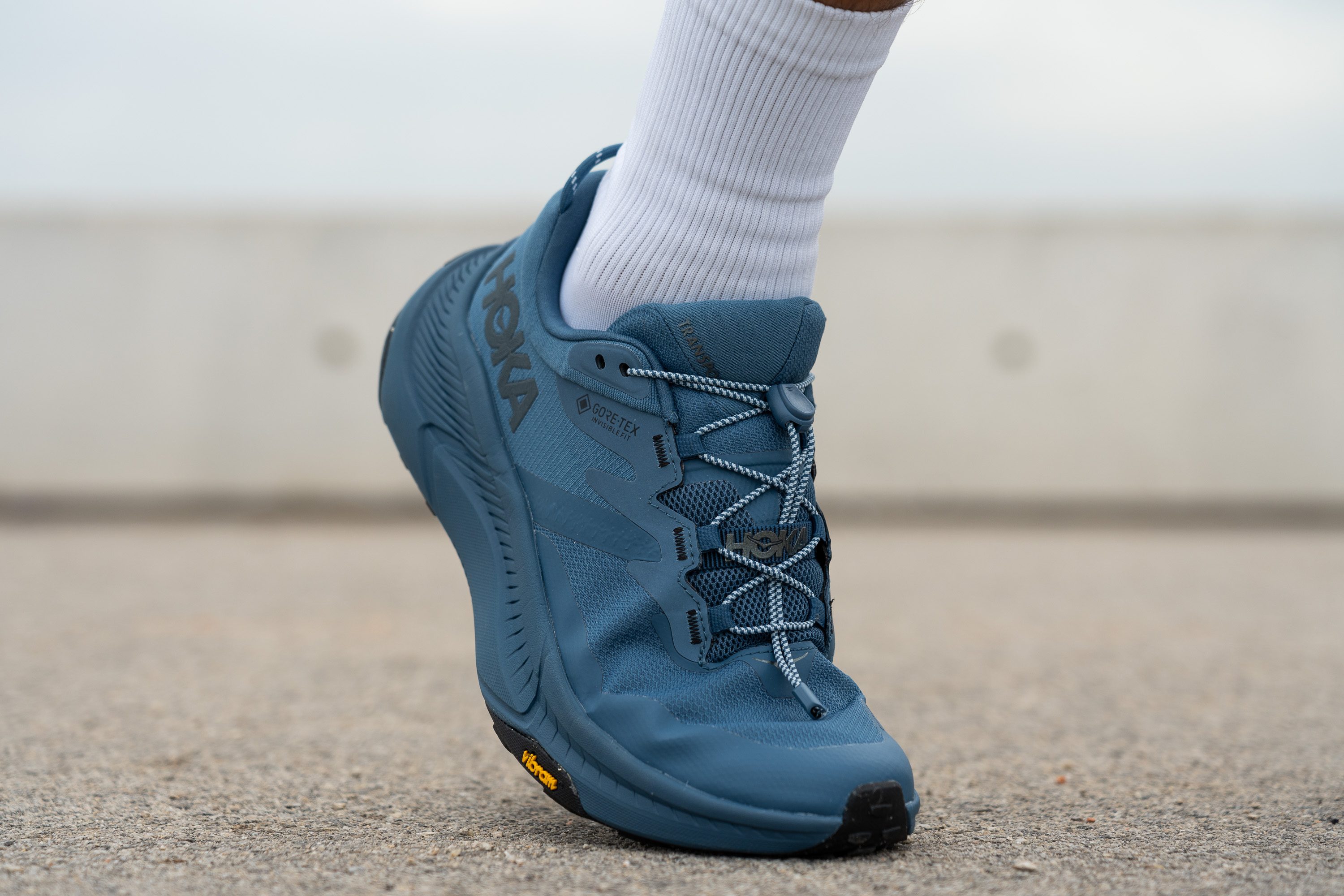
Weight
Unfortunately, added durability and waterproofing come with a compromise in weight and the Hoka Transport GTX outweighs its base model by almost an ounce.
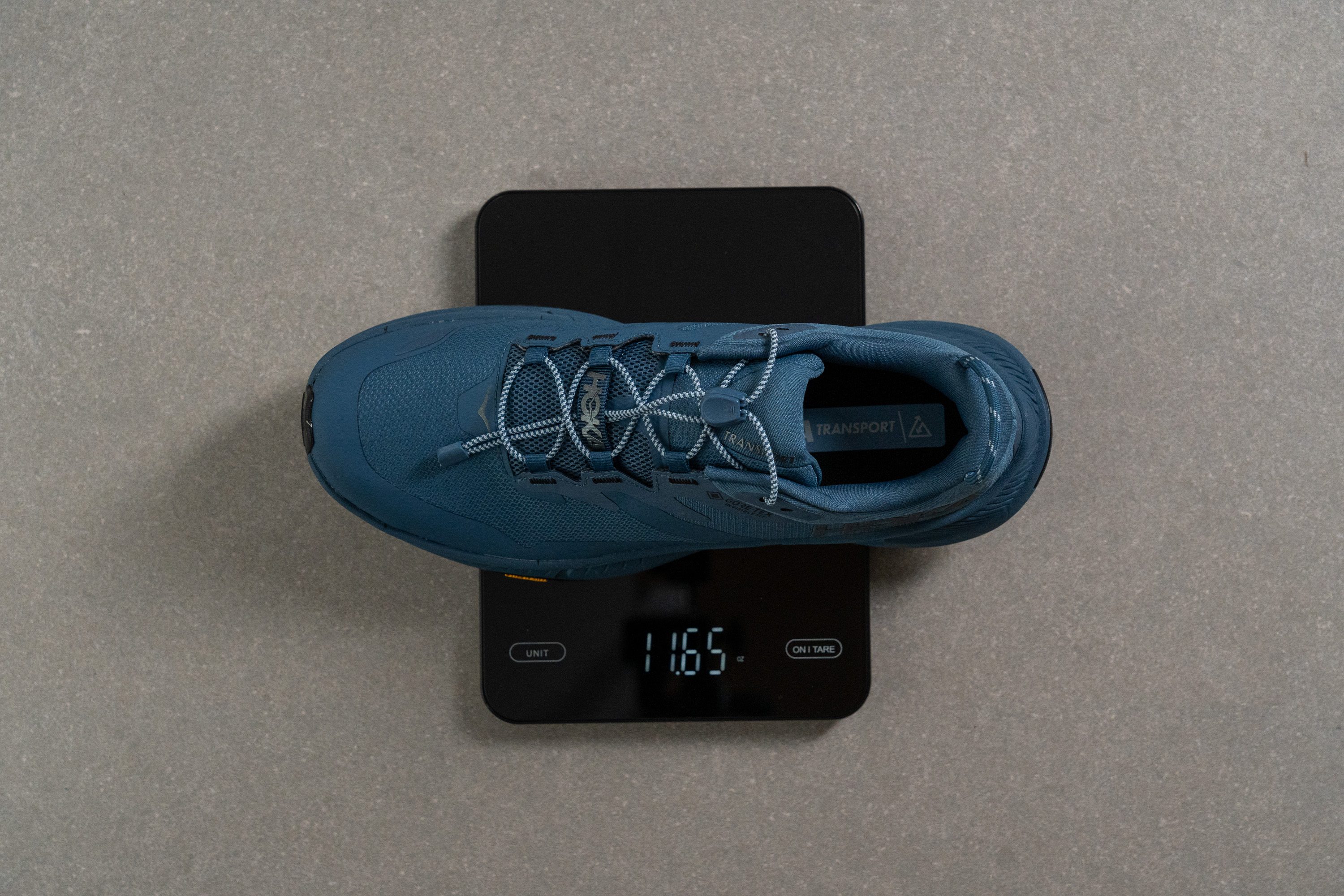
Tipping the scale at 11.6 oz (330g), the shoe turns out to be 2 ounces heavier than the industry average.
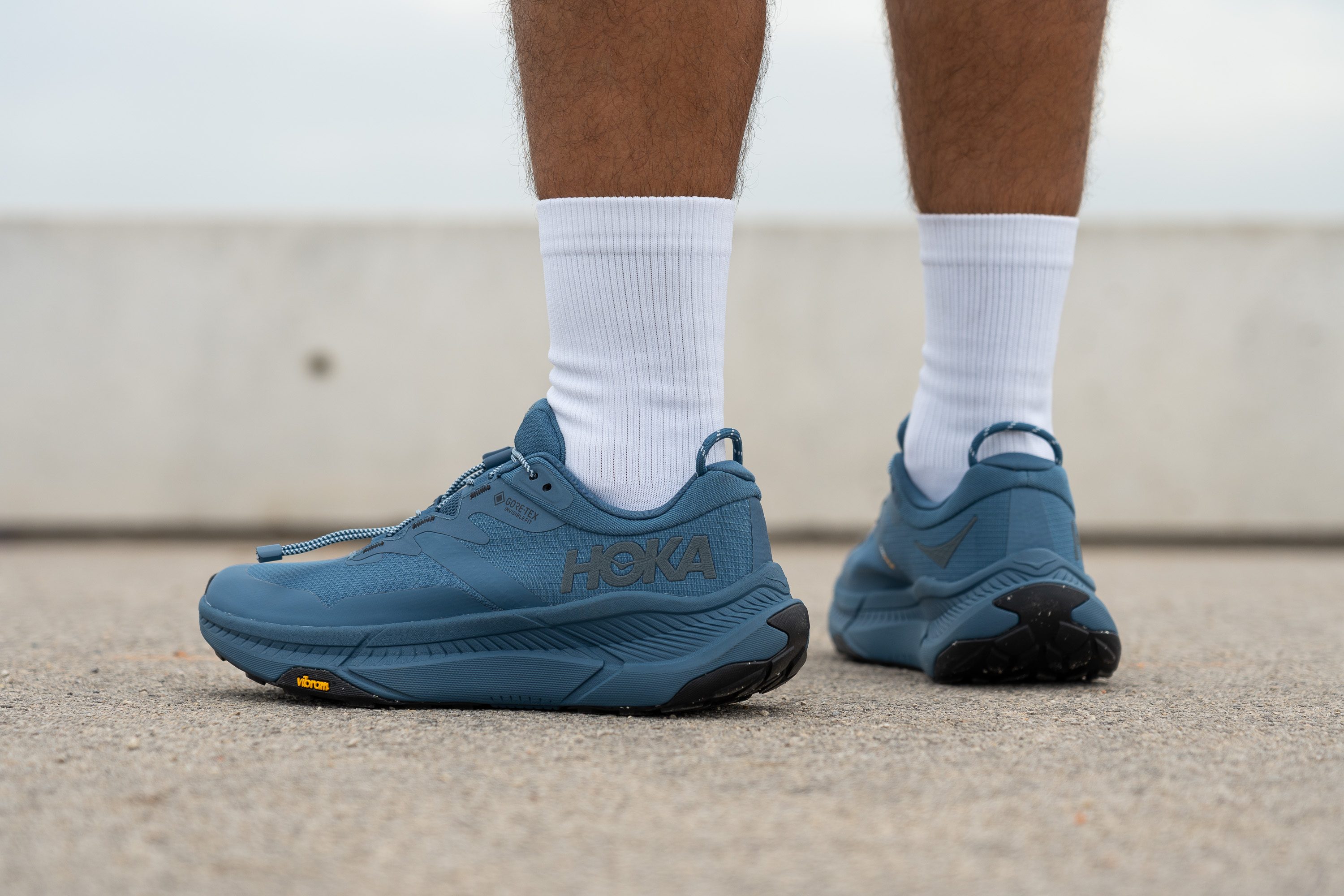
It doesn't feel particularly heavy on foot but if you are coming from Hoka's Bondi or Clifton shoes, you are going to feel the difference. And the Transport GTX's stiff upper material doesn't help to make it feel lighter.
| Transport GTX | 11.6 oz (330g) |
| Average | 10.2 oz (288g) |
Breathability
We already found the original Hoka Transport to be quite warm and didn't expect its waterproof GTX version to be any more breathable.
Pumping smoke through the shoe's upper material, we saw NONE of it pass through the toebox compared to the airy mesh shoe on the right. But that shouldn't come as a surprise because this Hoka shoe's upper is made of a tough Cordura weave on top of the GTX membrane.
Examining the Cordura fabric under the microscope, we found it to be identical to the one used on the base model.

Super tough and tightly woven, it complements Gore-Tex in keeping moisture at bay. But it also keeps breathability at the lowest possible score - 1 out of 5.
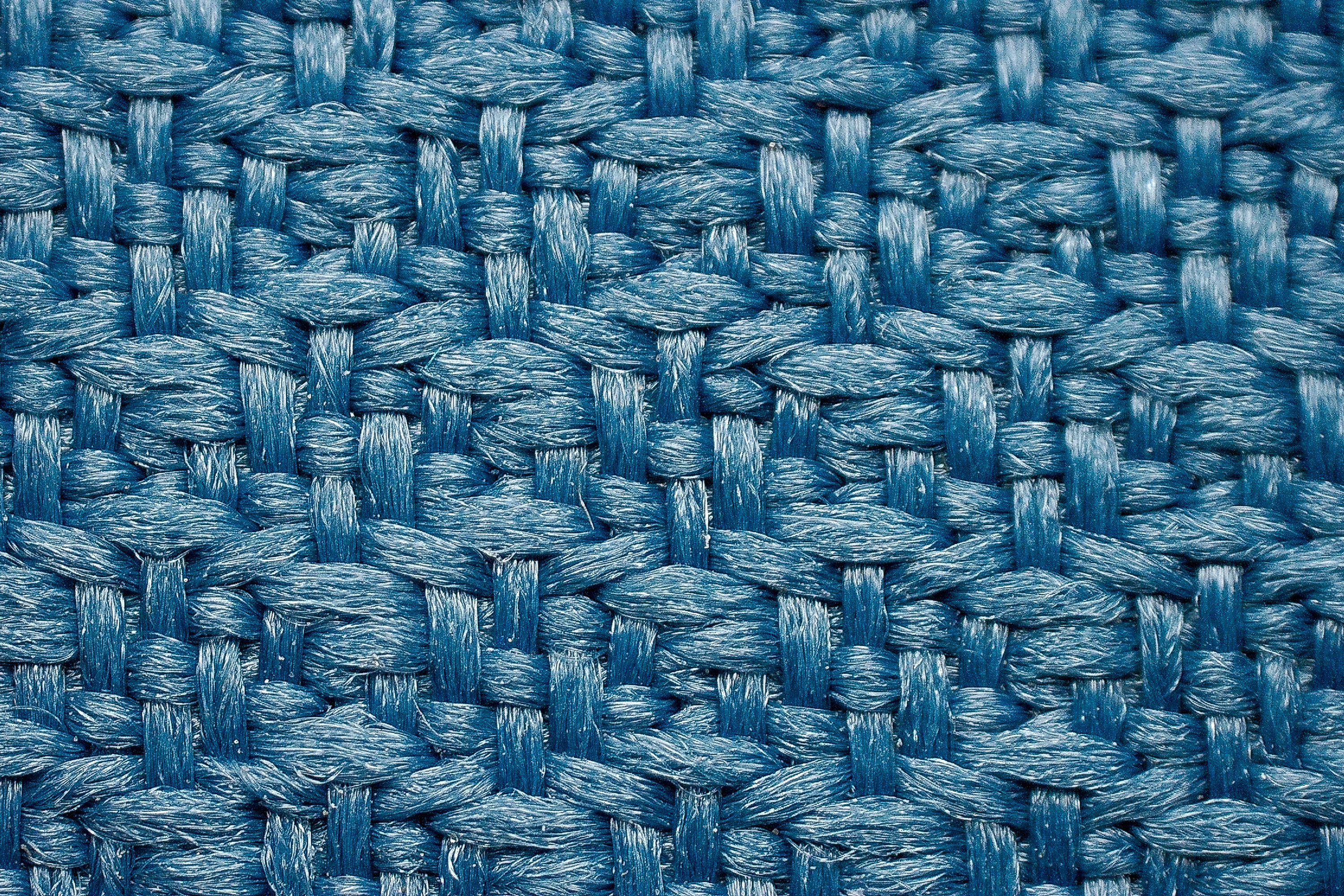
| Transport GTX | 1 |
| Average | 2.9 |
Stability
Lateral stability test
Its sturdy and stiff-ish build was among the first things we noticed about the Hoka Transport GTX. While this can be a push-off for people who want plushness and ease on their feet, we think that folks in search of a more stable ride will appreciate the rigidity.
While the Transport GTX is not marketed as a stability shoe (like the Hoka Arahi or Gavoita), we think it could work for people with mild overpronation. Look how well it controls the backs of our feet and ankles in the lateral stability test above.

Torsional rigidity
The shoe's impressive torsional rigidity plays a key role in its stability.
As our manual test above shows, it is nearly impossible to twist the Hoka Transport GTX with bare hands.
Thus, we readily gave it the highest stiffness score of 5 out of 5.
| Transport GTX | 5 |
| Average | 2.9 |
Heel counter stiffness
The back of this Hoka shoe also held our feet rather firmly in the rearfoot.
First of all, its midsole topline extends fairly high up embracing the base of the foot into a firm cradle.
Secondly, its heel counter has enough stiffness (3 out of 5) to prevent the heel from shifting around uncontrollably.
| Transport GTX | 3 |
| Average | 2.4 |
Midsole width - forefoot
Another important stability factor is the platform width and we found it to be reasonably wide in the Hoka Transport GTX.
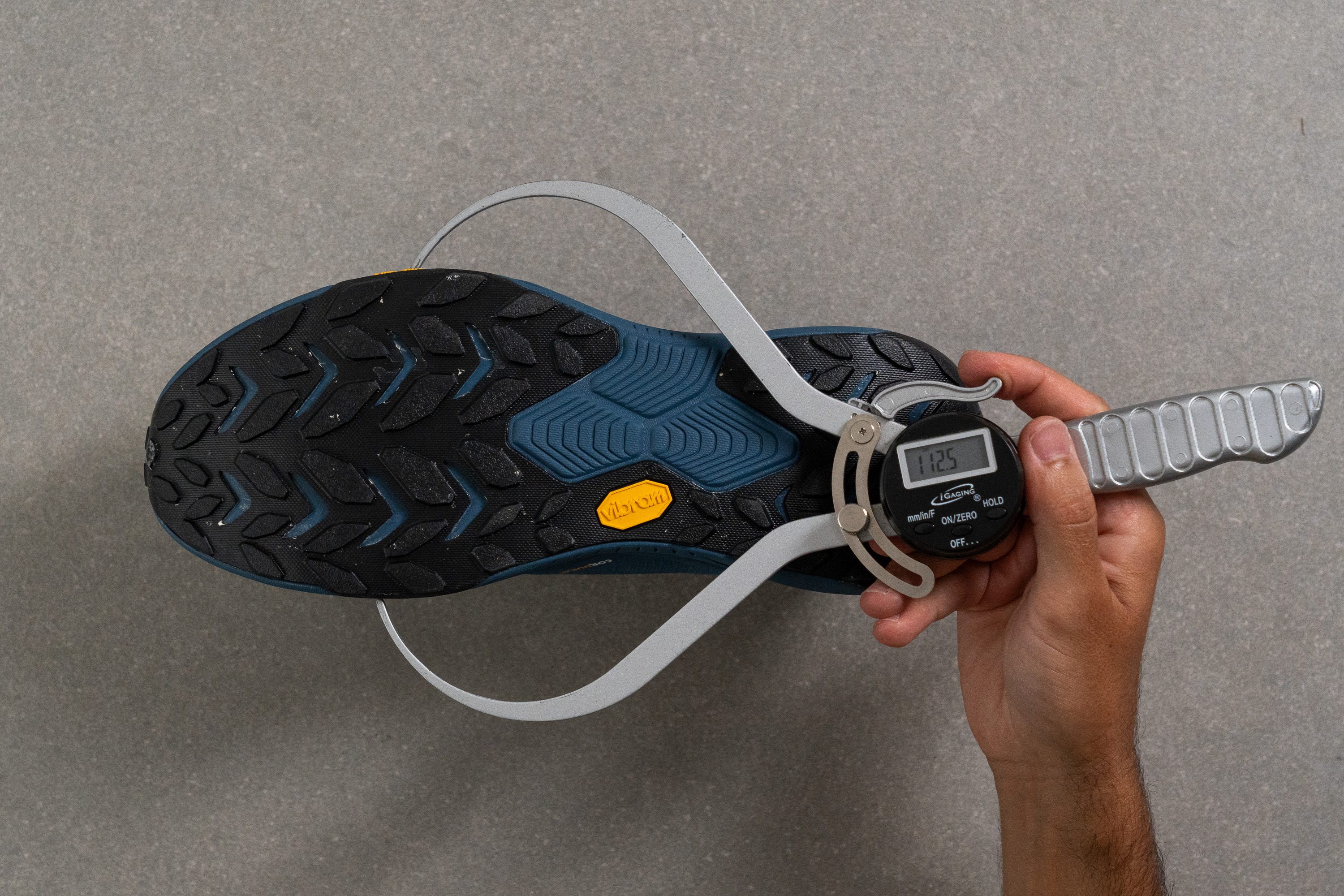
The widest area of the shoe's sole returned 112.5 mm on our caliper which is on par with the walking shoe average.
We were surprised at the more streamlined shape of this Hoka shoe's sole. That's because we've come to expect insanely chunky platforms from Hoka - think Clifton LS (122.8 mm) or Bondi SR (124.1 mm).
| Transport GTX | 112.5 mm |
| Average | 112.0 mm |
Midsole width - heel
Checking the widest part of the Transport GTX in the heel, our caliper showed a slightly wider-than-average measurement of 93.0 mm.

The extra few millimeters don't bulk up the shoe but add a welcome touch of steadiness.
| Transport GTX | 93.0 mm |
| Average | 90.3 mm |
Durability
Toebox durability
Extensively used in performance and military apparel, Cordura is one of the strongest nylon-based fabrics out there. But is it just as strong on the Hoka Transport GTX?
We put a sandpaper tip on our Dremel and set the speed to 5K RPM to test that out.
Assessing the scuff left by the tool, we rated the shoe's toebox durability with a solid 4 out of 5. One point was subtracted for the messy threads but they didn't compromise the shoe's waterproofing or upper integrity because it was not a full-on tear.
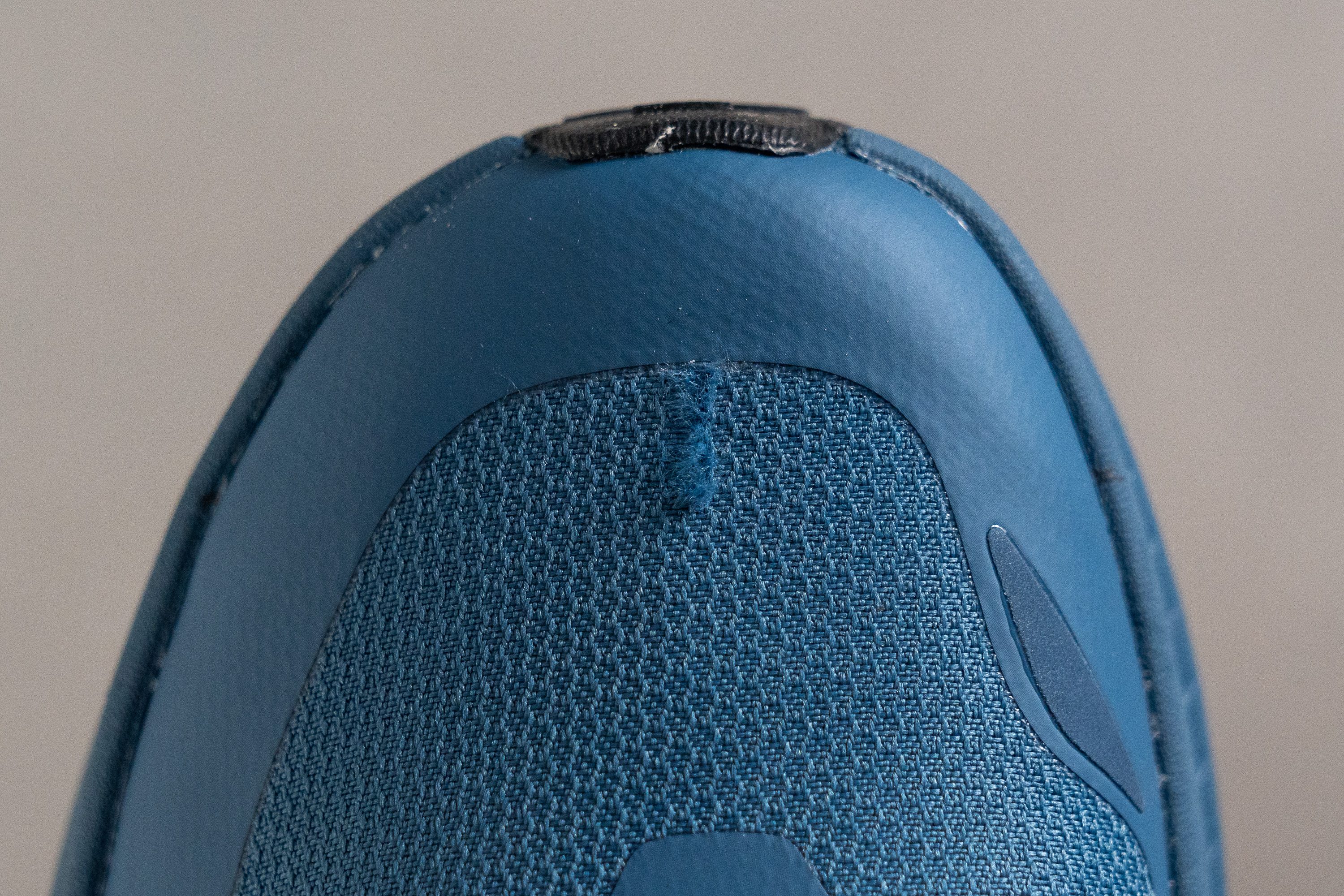
Add a protective overlay around the shoe's forefoot to the equation and you've got some of the most wear-resistant uppers for rocking the concrete jungle.
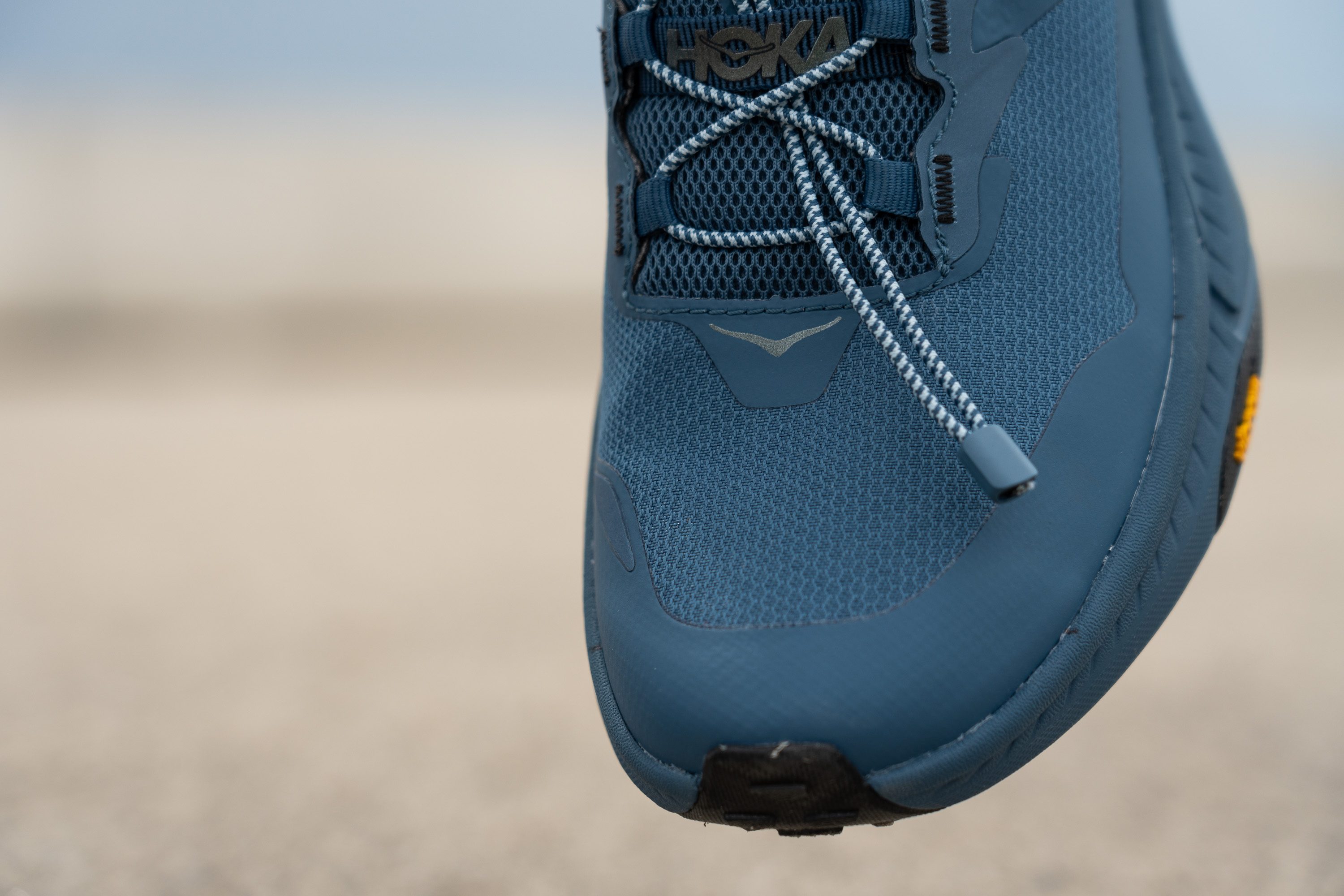
| Transport GTX | 4 |
| Average | 3.2 |
Heel padding durability
The strength of the interior material is equally important for saving the shoe's waterproofing capacity. We applied our Dremel to the most abrasion-prone area inside the shoe - the heel padding.
After 4 seconds of drilling at 5K RPM speed, we saw a very minor scratch which didn't seem to affect the shoe's lifespan. Thus, the shoe's heel padding durability got a high score of 4 as well.
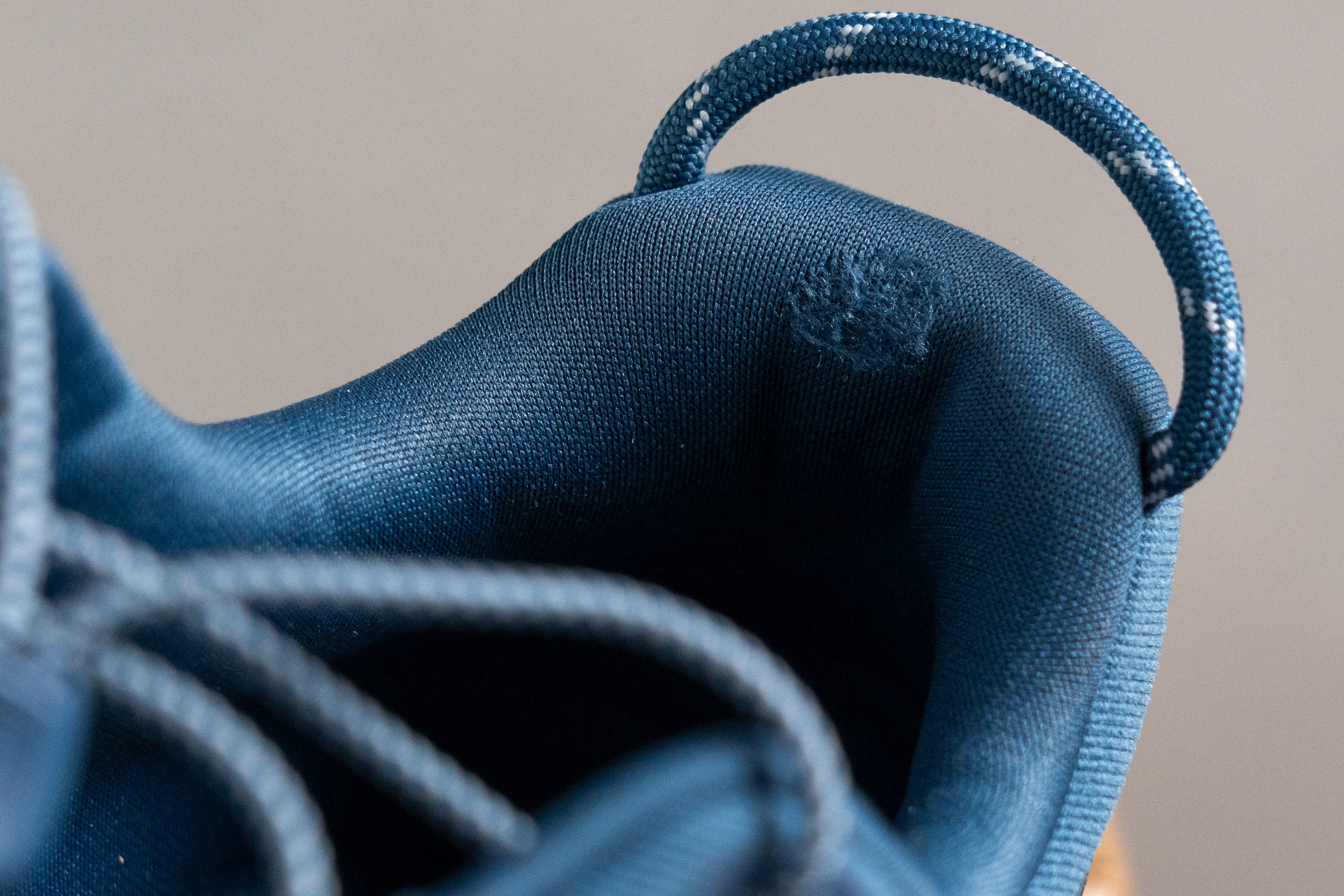
| Transport GTX | 4 |
| Average | 2.3 |
Outsole hardness
Along with its bulletproof upper, the Hoka Transport GTX also features a very strong Vibram rubber outsole.
Pressing our Shore C durometer against it, we got an above-average firmness of 81.0 HC. That's a pretty firm compound for a walking shoe because in many cases, brands just leave the midsole foam exposed in this footwear category.

| Transport GTX | 81.0 HC |
| Average | 78.0 HC |
Outsole durability
Applying our Dremel to the shoe's rubber compound, we also found it to be notably sturdier than average.
Having ramped up the speed to 10K RPM and extended the drilling time to 22 seconds, we nodded in approval when the rubber refused to give in. The tool failed to burn a dent deeper than 1.0 mm!

| Transport GTX | 1.0 mm |
| Average | 1.4 mm |
Outsole thickness
It will surely take longer to wear through a thicker layer of hard rubber. That's why we were glad to find that the outsole on the Transport GTX is 3.4 mm thick.

All in all, this Hoka shoe proves to have a notably more durable construction than a typical walking sneaker. Even if you use it for commuting on a daily basis or expand your geography to include some light trails, the Transport GTX is there to last you a good while.
| Transport GTX | 3.4 mm |
| Average | 3.0 mm |
Misc
Insole thickness
There is nothing spectacular about the shoe's insole but it does its job well. Measuring its thickness in the heel, we found that it's a bit thinner than average at 4.4 mm.
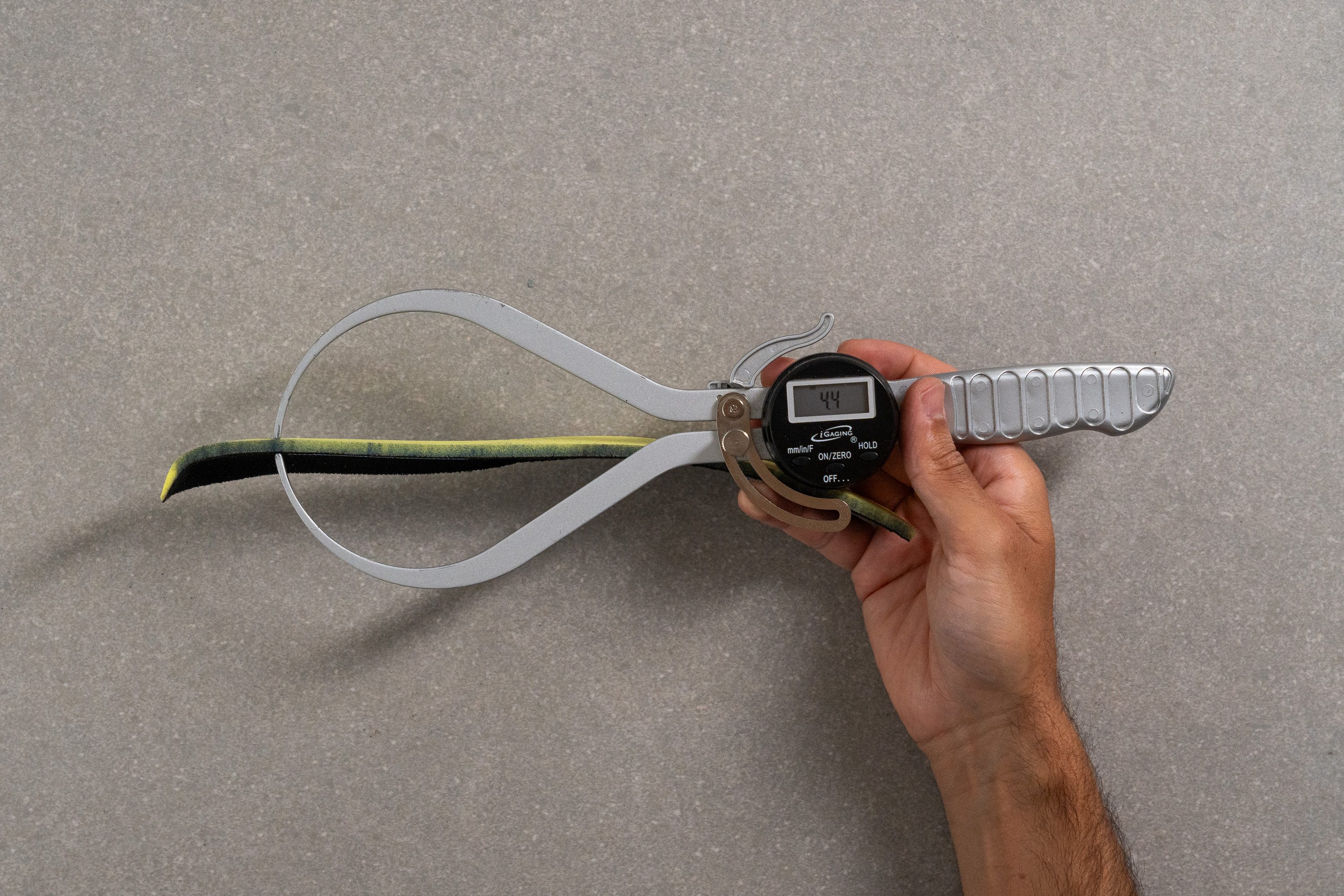
| Transport GTX | 4.4 mm |
| Average | 5.8 mm |
Removable insole
The stock insole of this Hoka shoe is easy to remove in case you want to enhance the cushioning.

| Transport GTX | Yes |
Midsole softness in cold (%)
But do expect the shoe to gain some firmness in cold weather. Considering that it is a waterproof GTX shoe, it is safe to assume that it is going to be worn in lower temperatures.
Having kept the Transport GTX in the freezer for 20 minutes, we repeated the durometer measurement and got a higher reading of 24.8 HA which indicates a 20.1% increase in firmness.

Luckily, even the post-freezer midsole measurement proved that this Hoka shoe is softer than the competition.
| Transport GTX | 20% |
| Average | 30% |
Reflective elements
No matter how late you're coming back home from work, the Hoka Transport GTX will keep you safe and visible in low-light conditions. Its 360-degree reflectivity elements are much bigger than the ones we normally see on walking shoes (if there are any to begin with).
| Transport GTX | Yes |
Tongue padding
The in-shoe comfort of the Transport GTX is provided through its reasonably padded collar and tongue.

We measured the thickness of the latter at 5.3 mm which is standard for a walking shoe.
| Transport GTX | 5.3 mm |
| Average | 5.6 mm |
Tongue: gusset type
To serve the highest level of water protection, any serious waterproof shoe must have a gusseted tongue to prevent moisture from seeping inside.
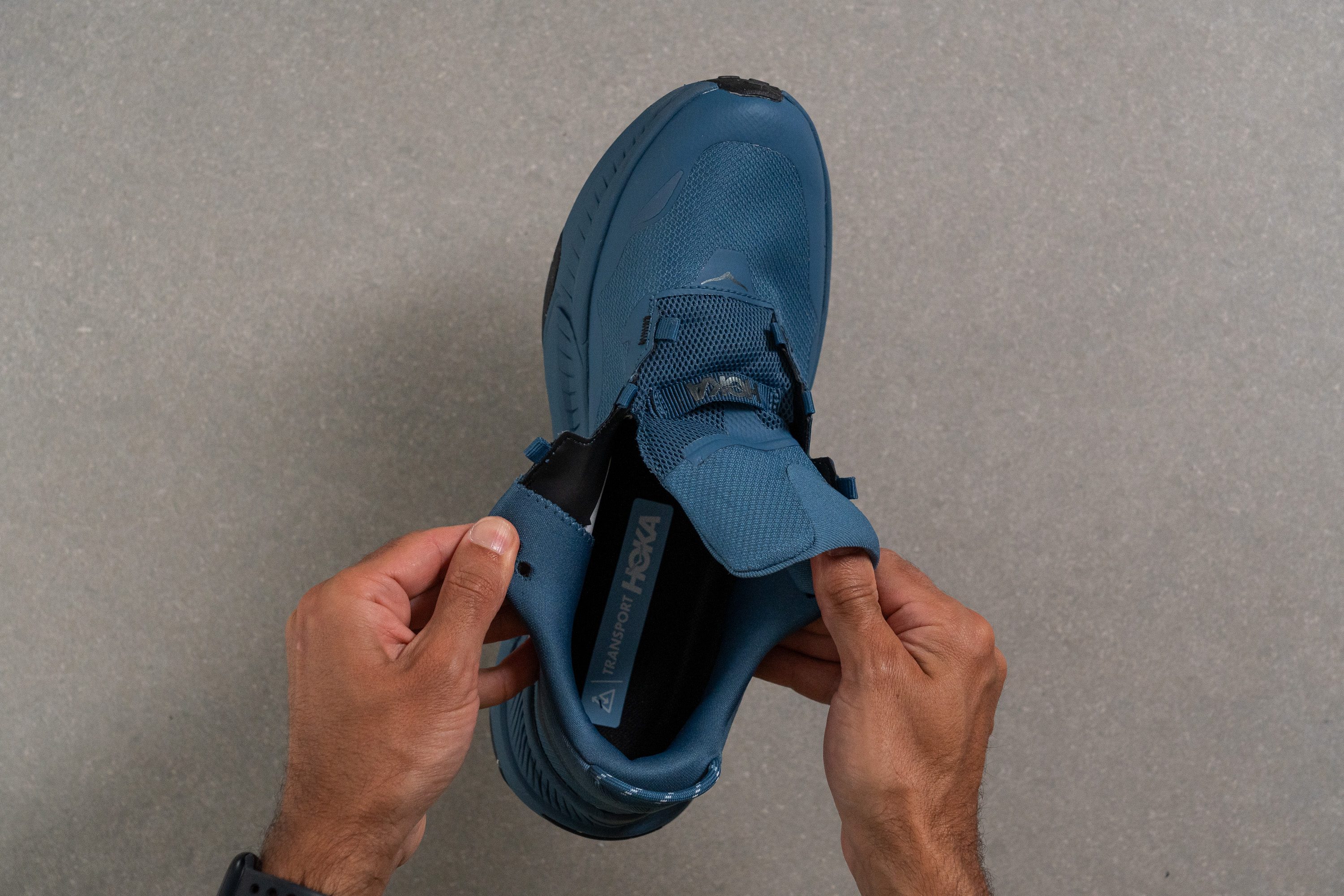
The Transport GTX features a semi-gusseted setup (aka the Invisible Fit) to close the gaps between the tongue and the shoe quarters.
| Transport GTX | Both sides (semi) |
Heel tab
Finally a shoe with a finger loop that's big enough to actually fit a finger (or two)!
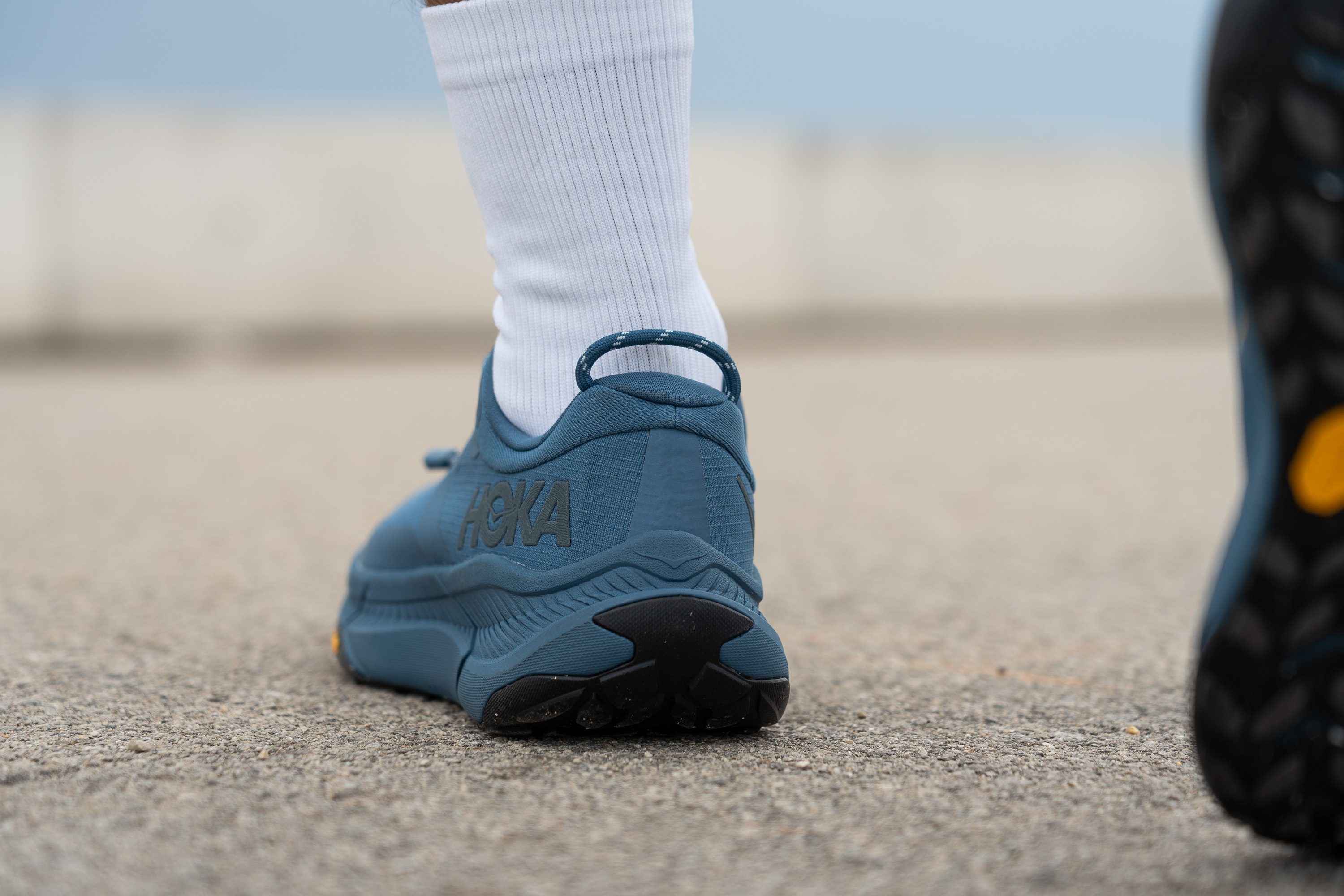
We found it nice and handy when getting this Hoka shoe on.
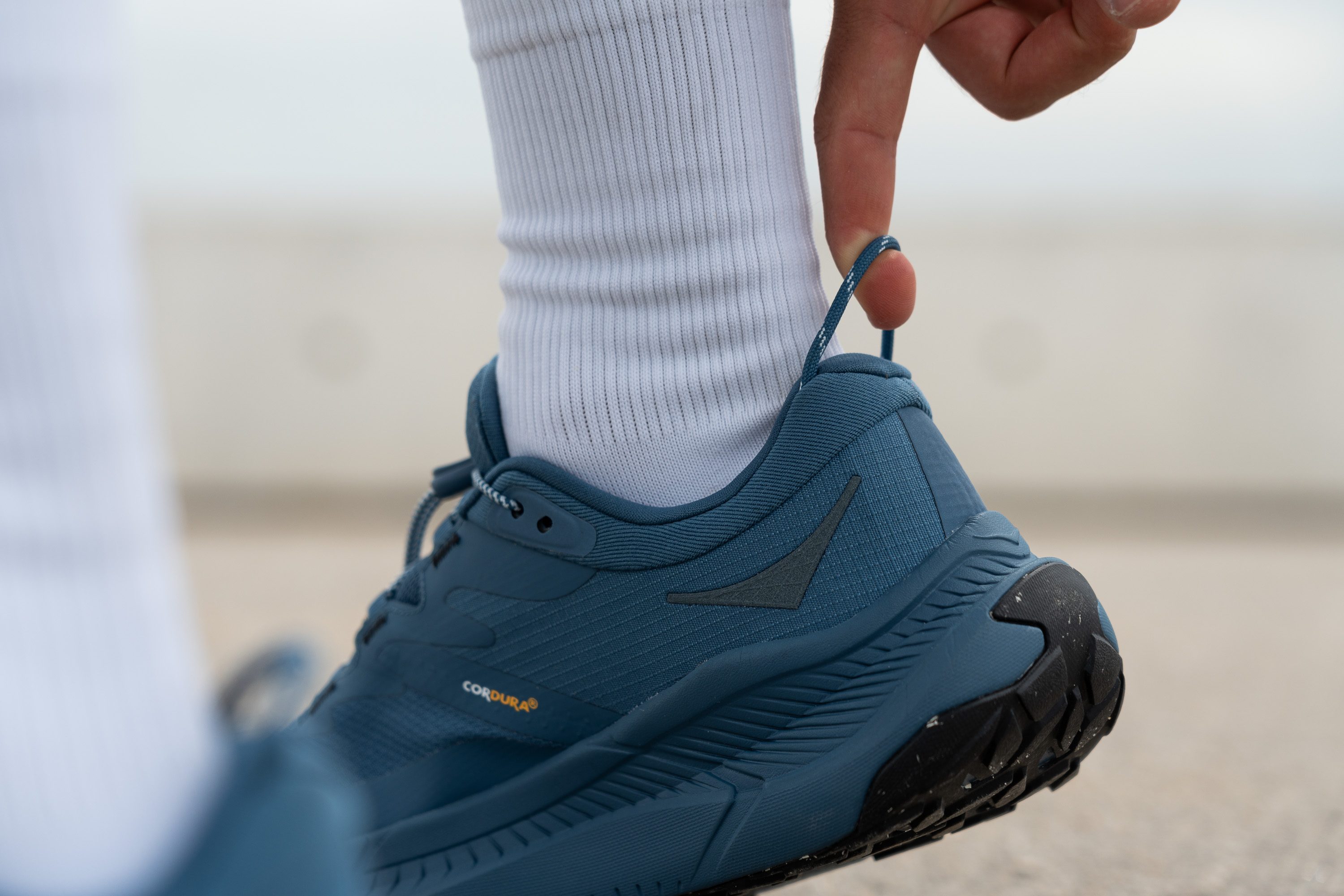
| Transport GTX | Finger loop |
Sustainable materials
Hoka is one of those brands that strive towards making more sustainable products. It's nice to see that many parts of the Transport GTX are made with ethically sourced materials including:
- the primary Cordura mesh (100% recycled polyester)
- the Gore-Tex face fabric (70% recycled polyester)
- EVA midsole (35% sugarcane)
- Vibram EcoStep Recycle EVO outsole (30% regrind recycled rubber)
- tongue and collar lining (100% recycled)
- sockliner (50% soy-based)
